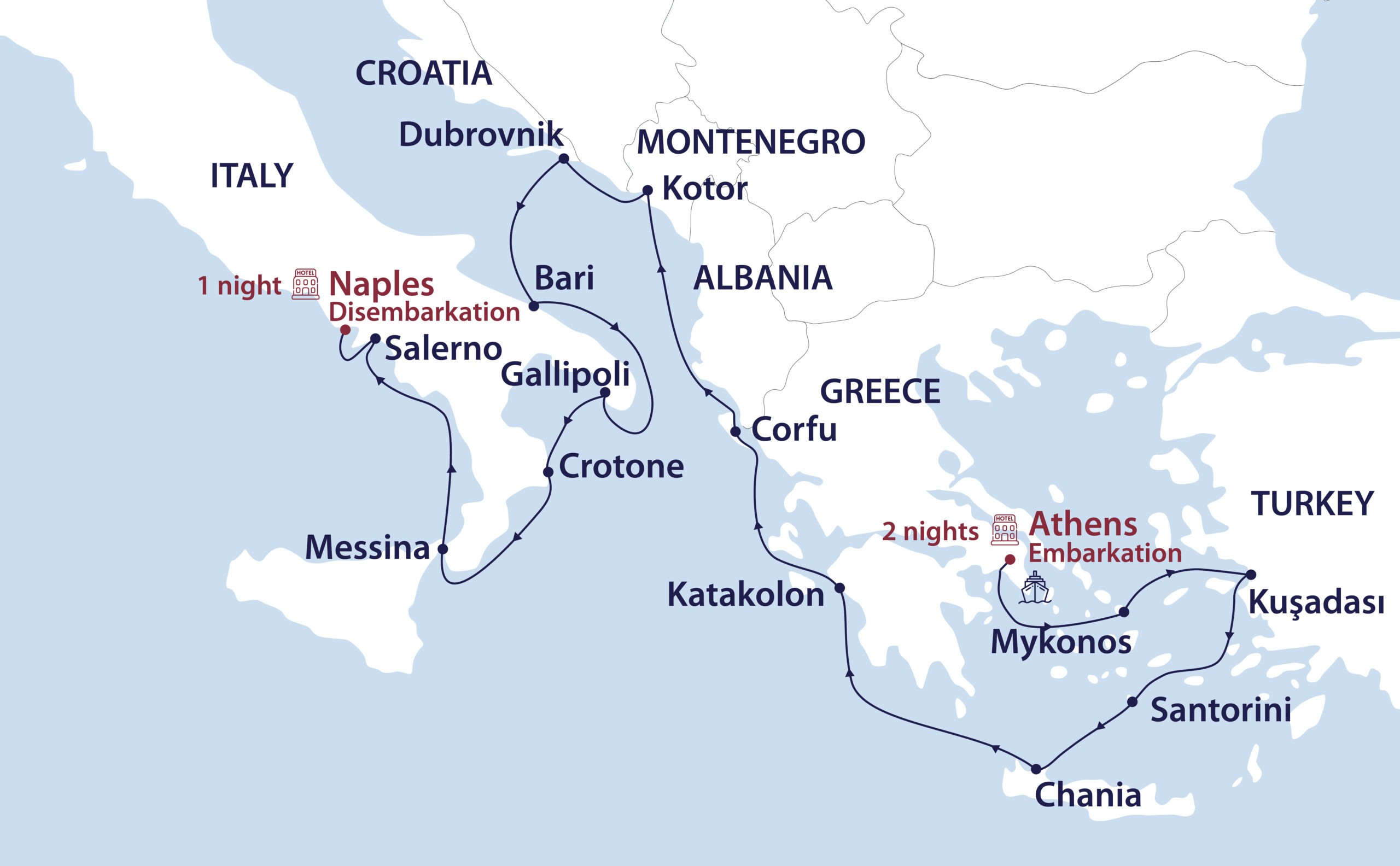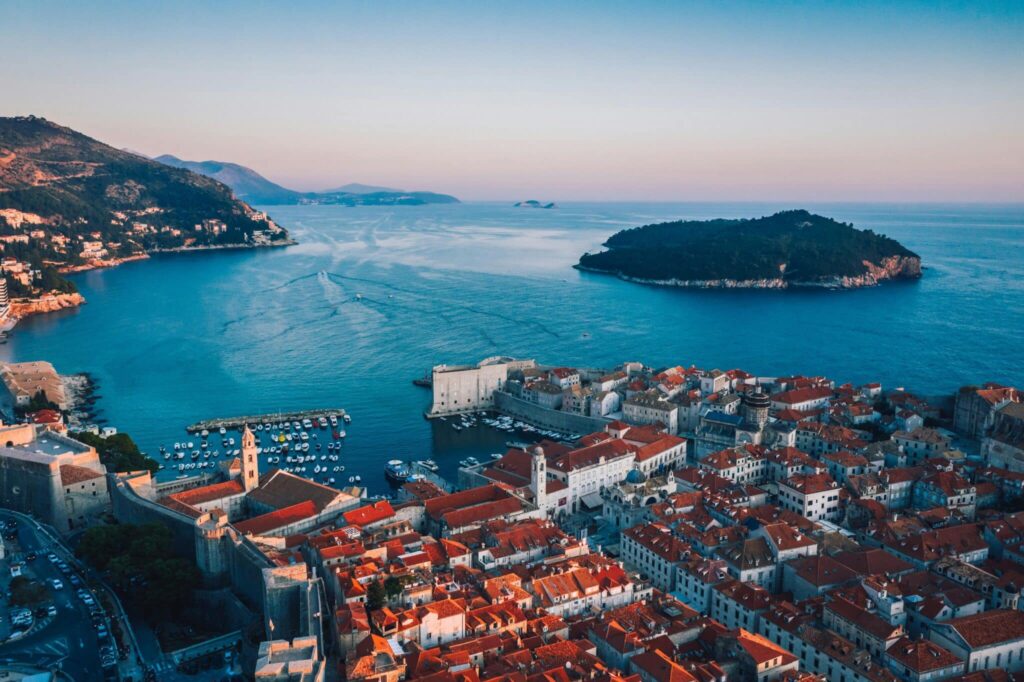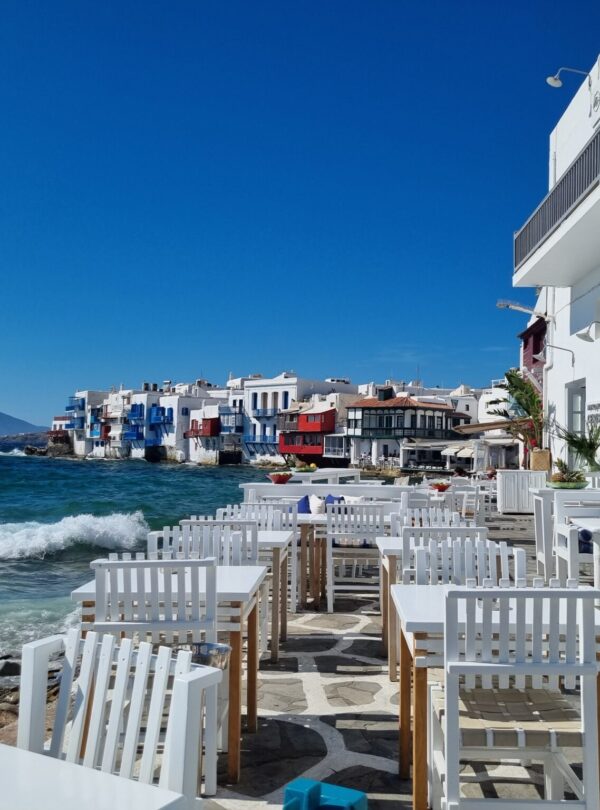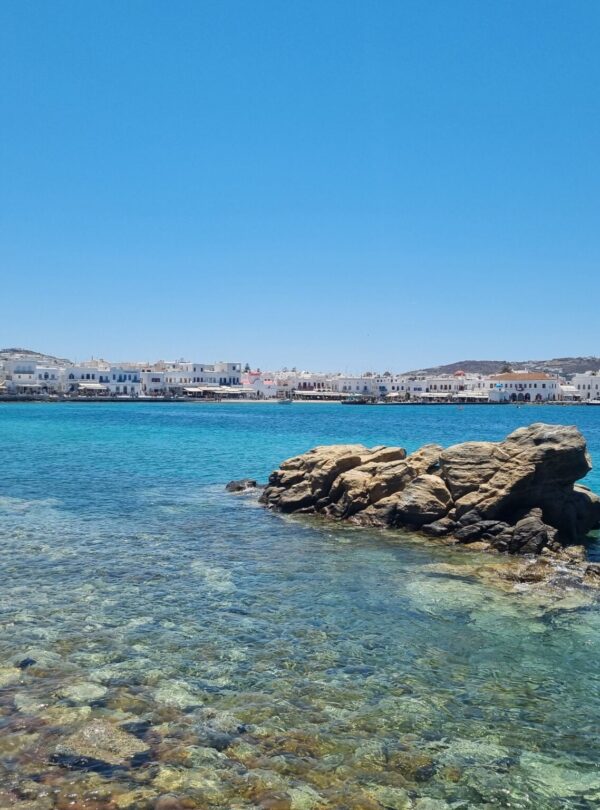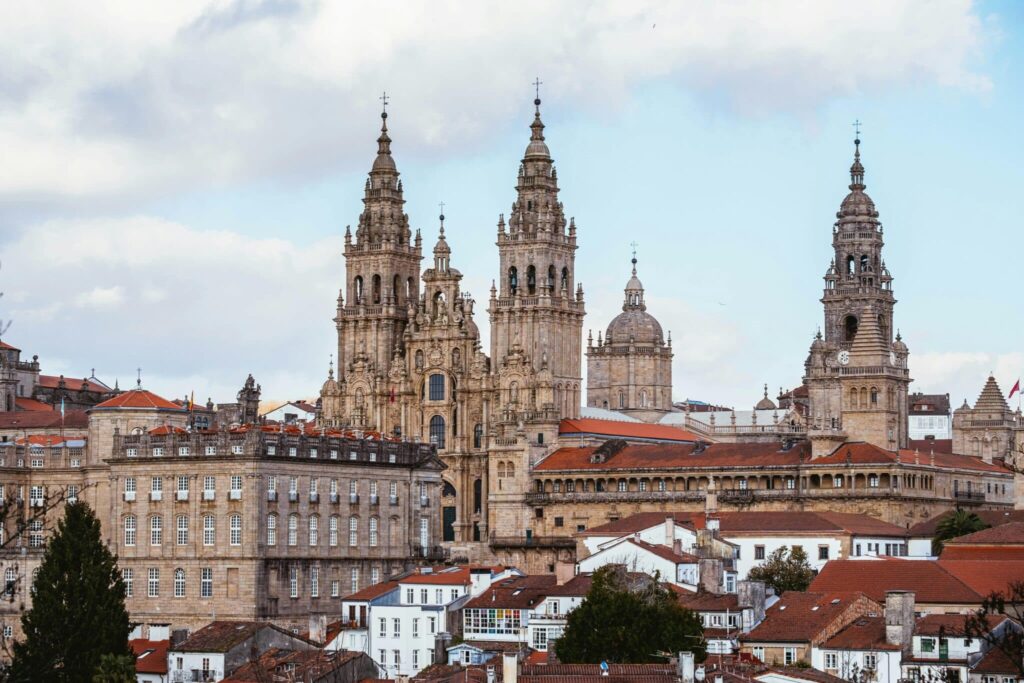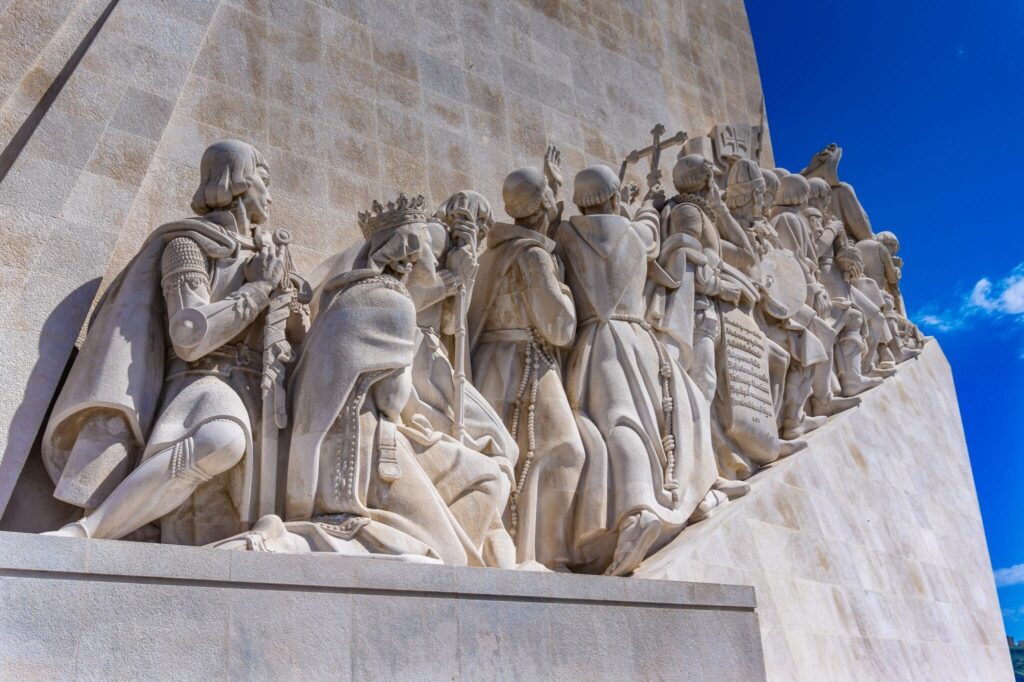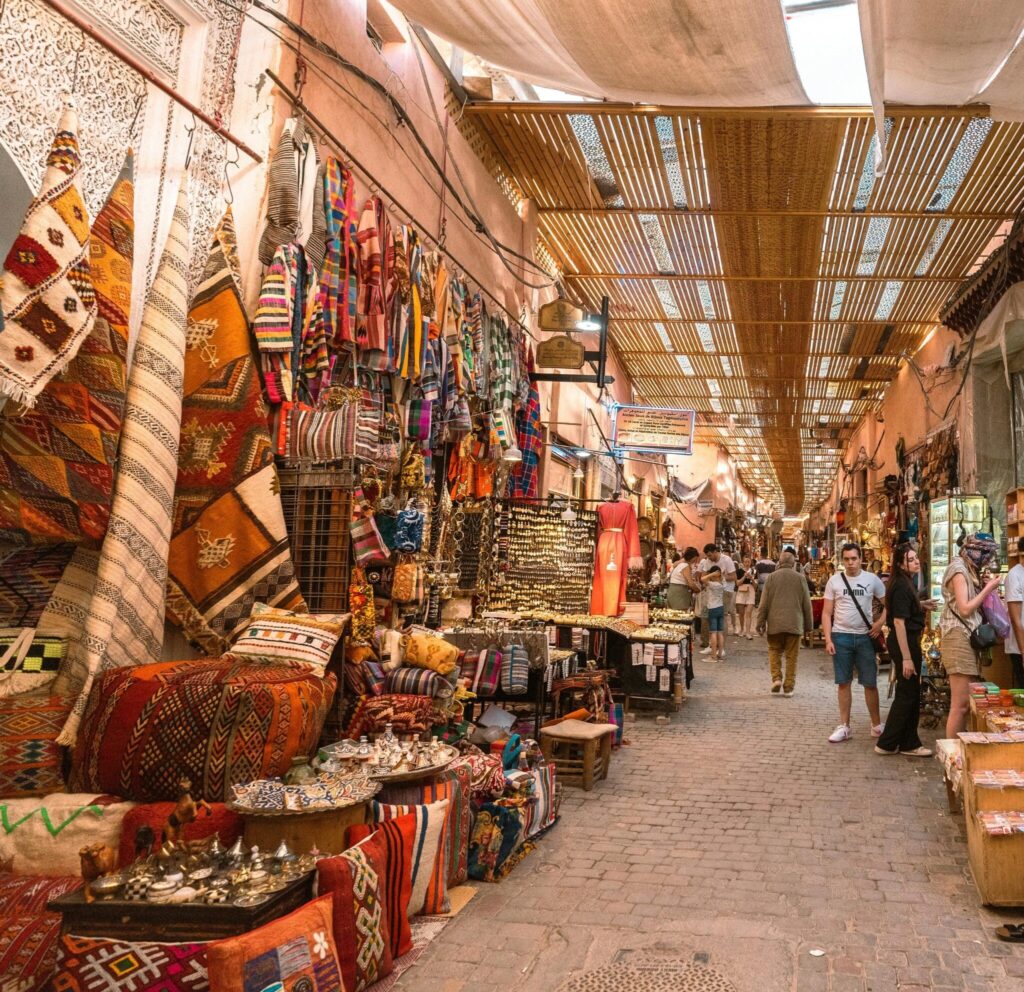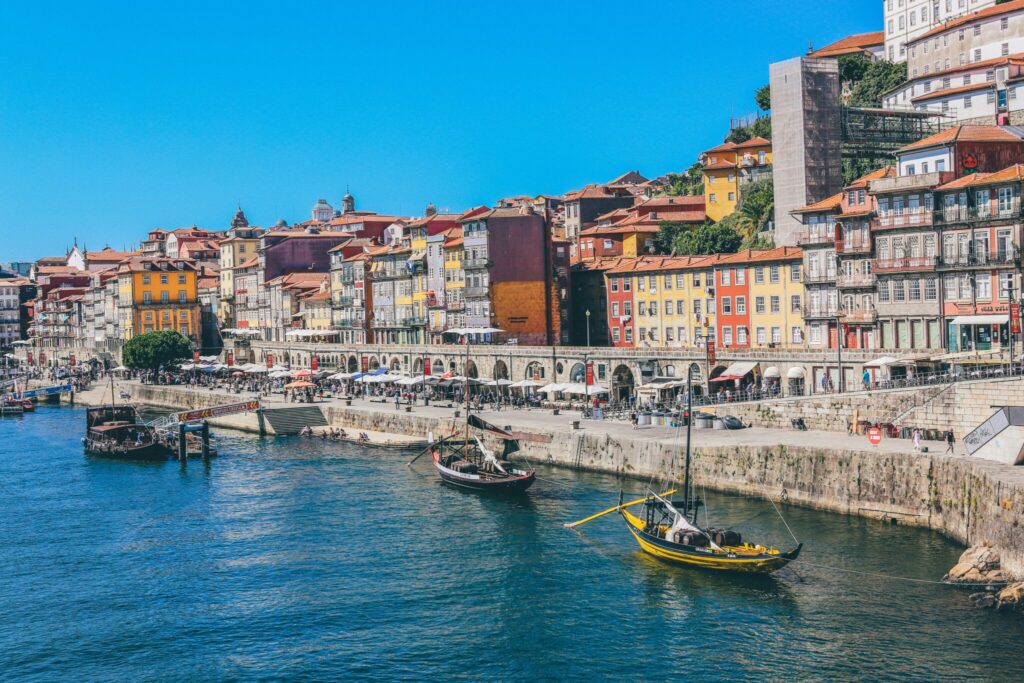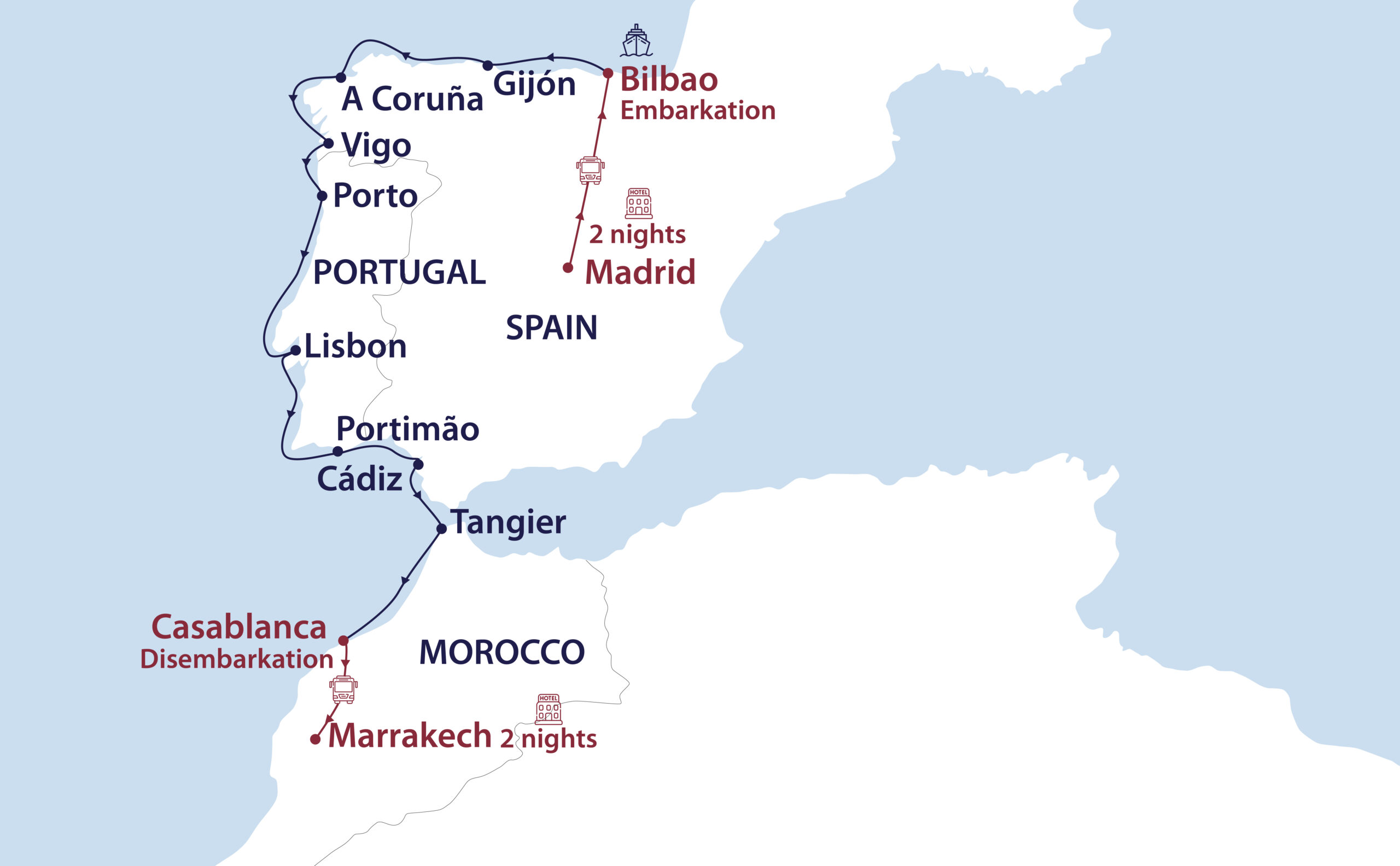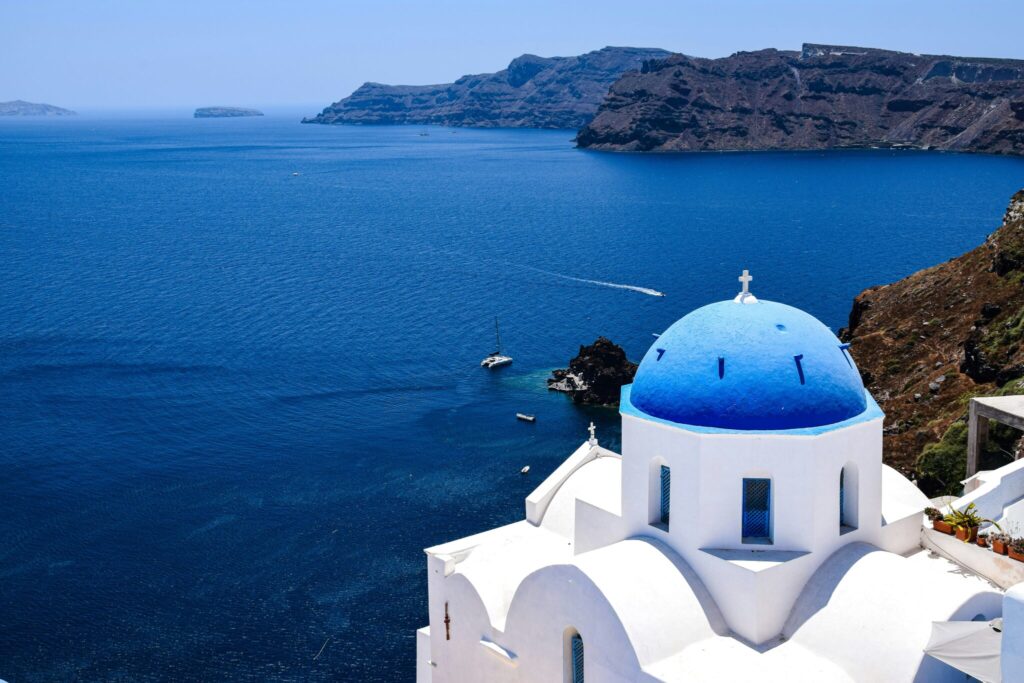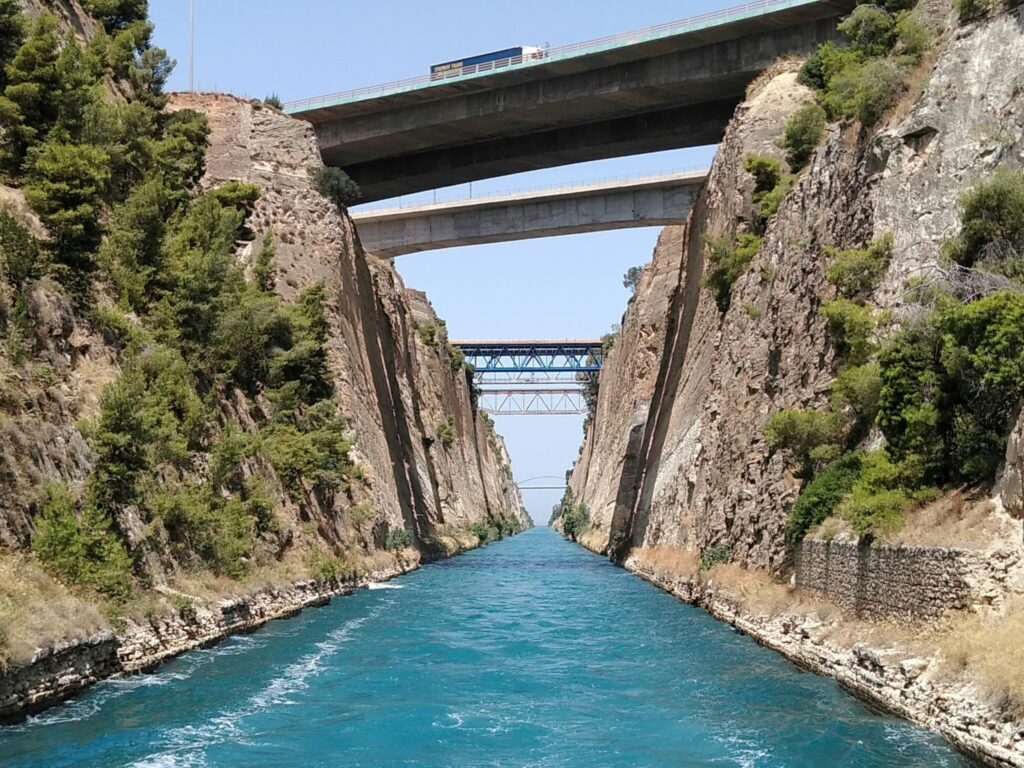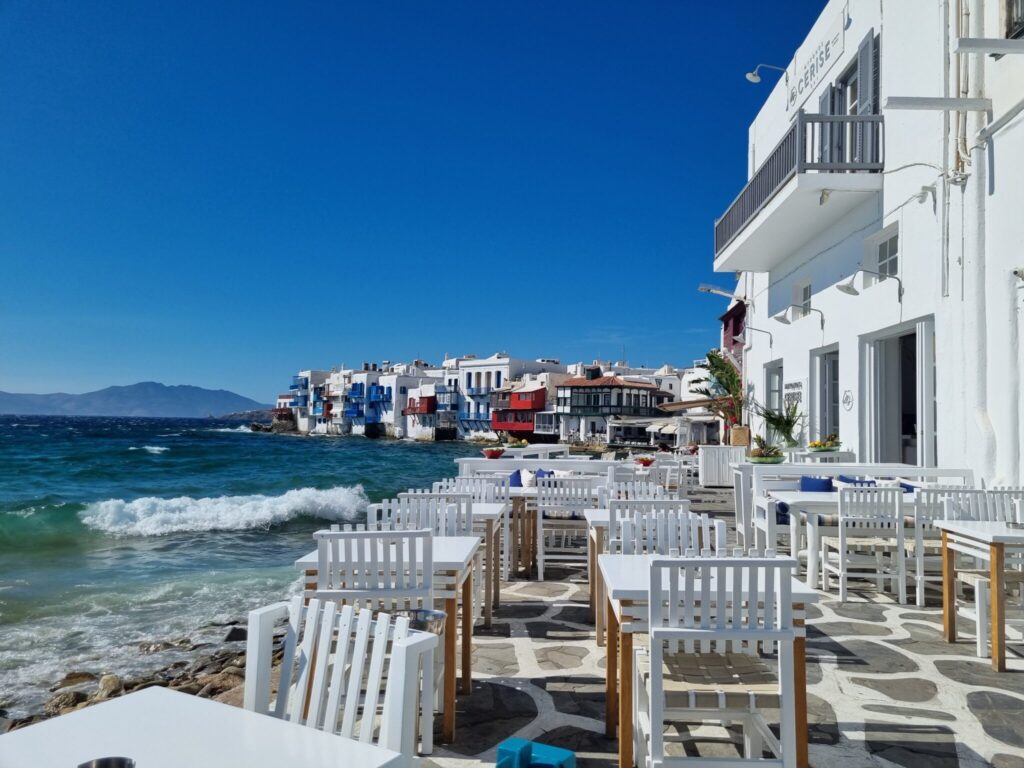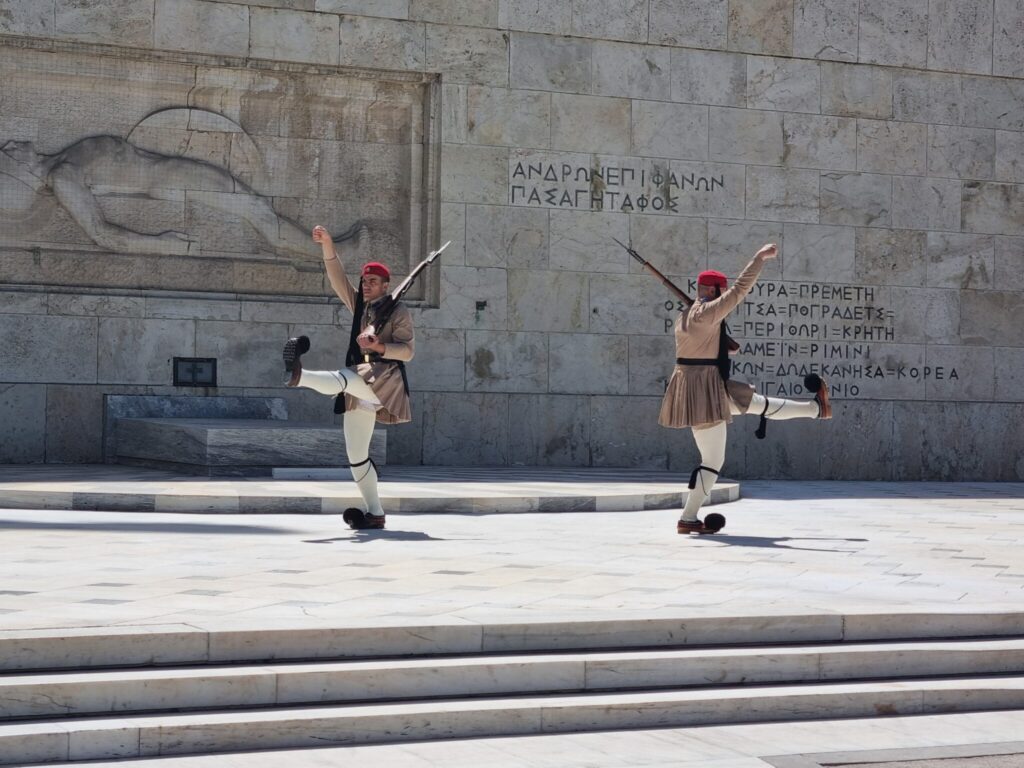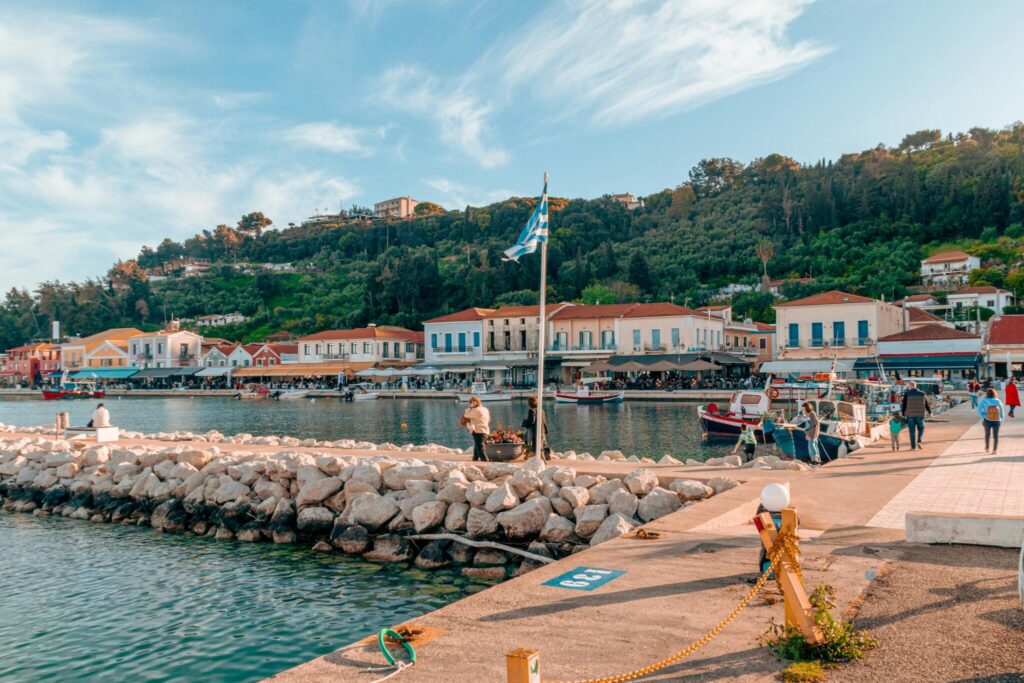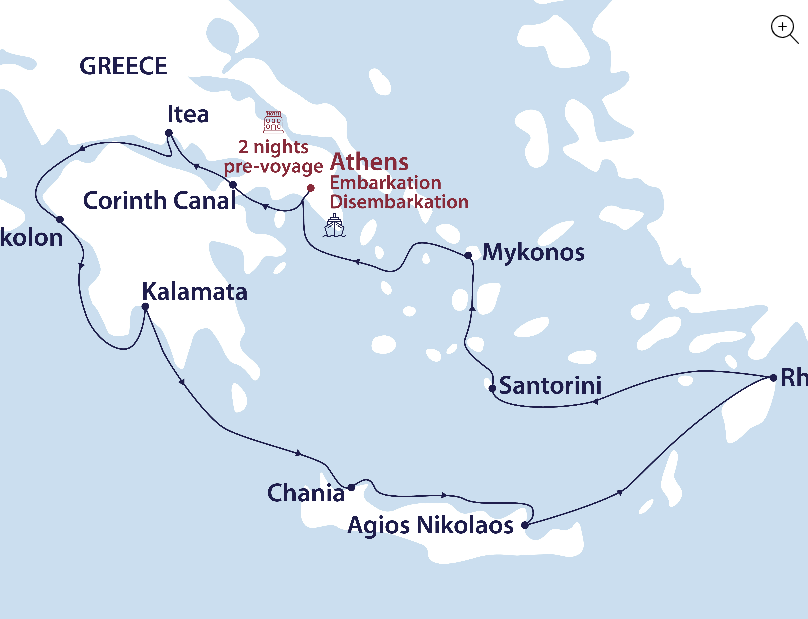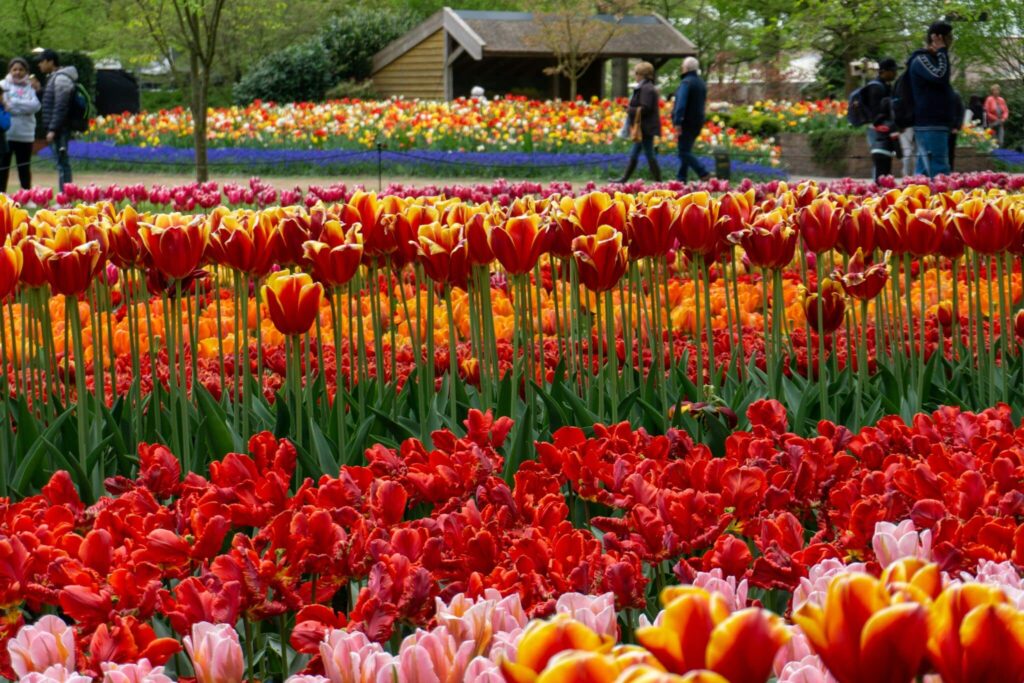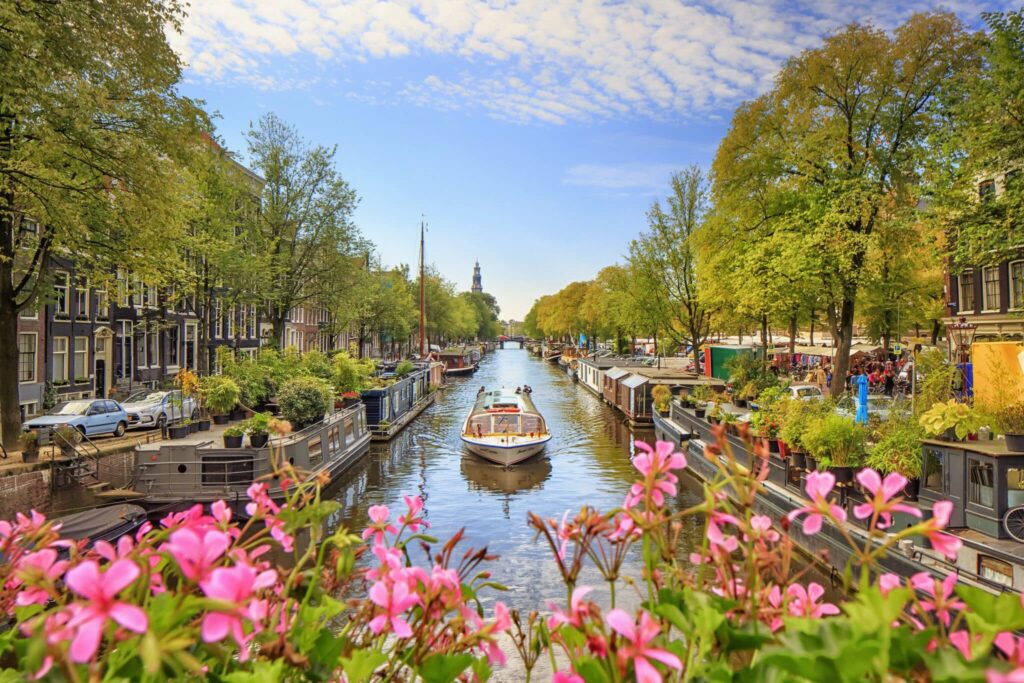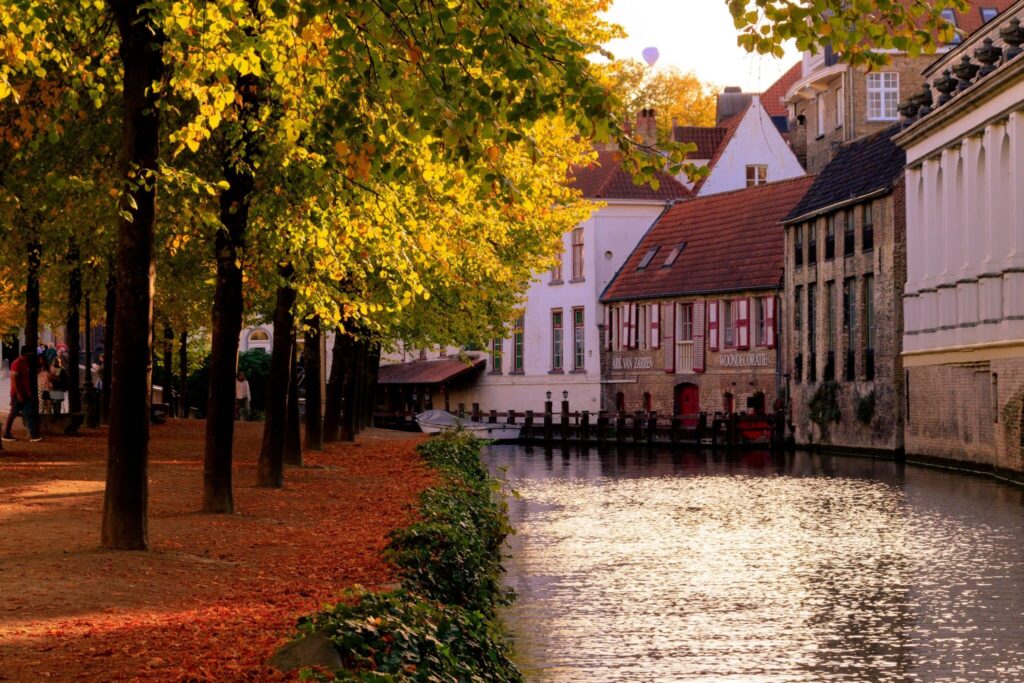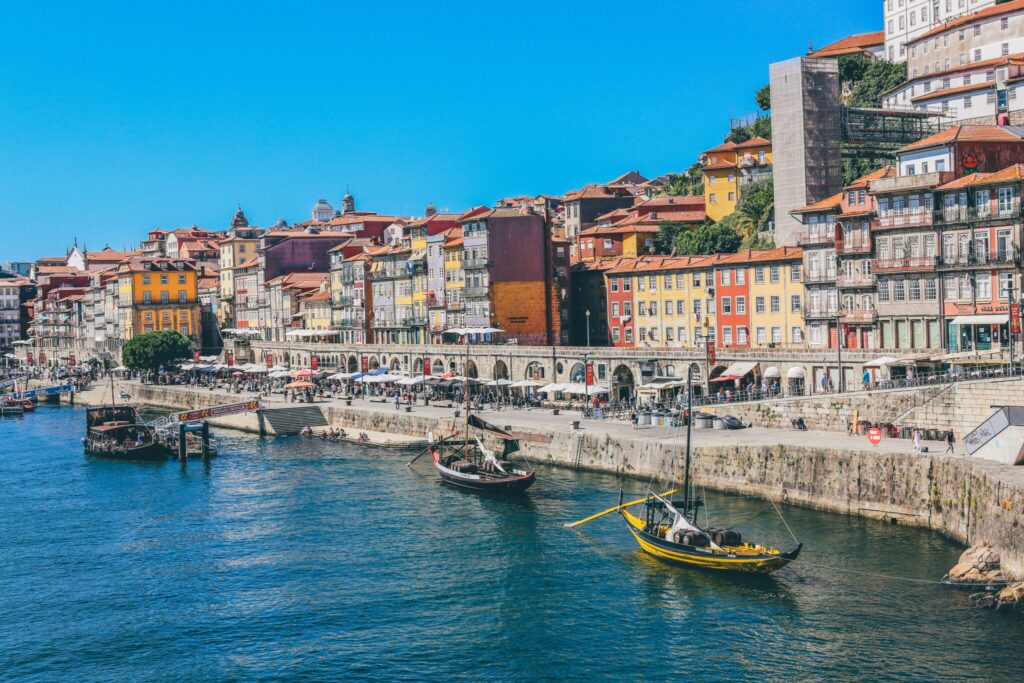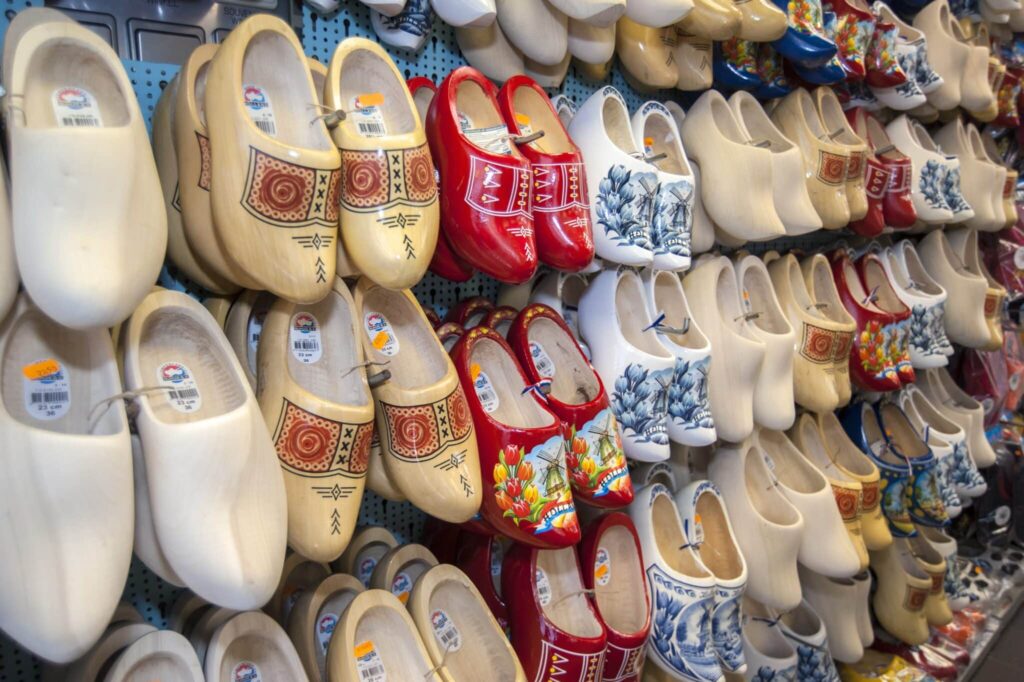Overview
Embark on an epic journey through legendary kingdoms, mythical lands and ancient sites as we explore Greece, Turkey, Montenegro, Croatia, Italy and Sicily. Discover tales of all-powerful gods and heroic figures in Greece and hear tales of the opulent communities of ancient Athens, Ephesus, and Pompeii. Immerse yourself in the rich folklore of Montenegro’s waterfront villages and uncover stories of political fervour and island communities in Croatia. Witness Italy’s enduring legacy of Sicilian feuds, piratic treasures, and the tumultuous reigns of dictatorial Roman emperors. This voyage promises experiences as diverse and captivating as the tales that have shaped these lands. Join us as we navigate these enchanting stories, to uncover enough intriguing titbits and inspiring trivia to last a lifetime.
Trip Highlights
- Embark on an epic journey immersing yourself in the rich heritage and cultures of Greece, Turkey, Montenegro, Croatia and Italy
- Explore the fascinating historic UNESCO sites across the Mediterranean from Athens’ Acropolis and Ephesus’ ruins to Dubrovnik’s city walls and the streets of Pompeii
- Hear tales of myths and legends from your local guides as they entertain you at numerous iconic locations and lesser-known gems through-out your journey
- Connect with the welcoming locals, experiencing vibrant traditions, from traditional Greek dances and Turkish bazaars to Italian feuds and Croatian folklore
Itinerary
Welcome to Athens. On arrival at Athens airport make your way to the Arrivals Hall to meet our representative, followed by a transfer to our group hotel. At the hotel, visit our hospitality desk in the lobby to meet our team who will provide you with useful information regarding pre-embarkation procedures and about your time in Athens.
You will also receive cabin tags for your luggage. Please clearly label the tags with your name and your cabin number on the ship. This evening offers time to relax in preparation for tomorrow.
Accommodation: Athens Hotel
After breakfast, enjoy a morning ‘Your Choice’ experience. Walk in Socrates' footsteps, explore the ancient wonders of the Acropolis, or immerse yourself in Athens' vibrant food scene with a local guide. You can then rejoin the coach to return to our hotel or take a leisurely stroll to the nearby Plaka district. This charming area is filled with streets and alleys lined with restaurants, cafes, and shops—ideal for a bite to eat or picking up gifts (lunch at your own expense). Tonight, we kick off our journey with a Welcome Event, celebrating Greek style.
With a rich recorded history spanning 3,500 years, Athens is a city brimming with stories. Widely hailed as the ‘cradle of civilisation’ and revered as the birthplace of democracy, philosophy and theatre, Athens seamlessly merges its illustrious past with its vibrant present. This bustling metropolis, home to three million inhabitants, is adorned with a wealth of ancient sites that punctuate its landscape like temples, iconic columns and former city centres. Athens’ influence in antiquity transcended its borders, ushering in a Golden Age characterised by political discussion, education and philosophy, hosting luminaries such as Socrates, Plato and Aristotle. The democratic principles forged in Athens laid the groundwork for modern governance systems worldwide.
Yet, Athens is more than just a relic of ancient history. As a historical seat of power, it has weathered waves of invasions, shaping its contemporary identity with a diverse fusion of architectural styles, culinary delights and cultural traditions. Whether you are wandering amid ancient ruins or indulging in the flavours of modern Greek cuisine, Athens offers a captivating journey through the ages, beckoning travellers from across the globe to explore its timeless allure.
Personalise your exploration with our included ‘Your Choice’ experiences.
Option 1 – Morning experience: A Taste of Athens
For foodie fans, travellers who have visited Athens before, and those who enjoy a personal view of Athens, this experience is perfect. We begin our guided walk at Syntagma Square, where Greece’s Parliament building stands, guarded by traditionally attired Evzone guards. Our local expert warmly welcomes you to their home city, leading you on an intriguing walking tour through Athens’ historical areas. With passion and knowledge, they unveil authentic Athens and its secrets.
Stroll through Plaka, the charming ‘old quarter’ of Athens nestled at the base of the Acropolis. Admire its eclectic neoclassical architecture, picturesque alleys, and inviting tavernas. Pause at a colourful local cafe to indulge in Greek delicacies such as olives, fragrant cheeses and cured meats.
Continue through Monastir Aki, famous for its bustling flea market and vibrant shops brimming with local crafts and souvenirs. From there, we wander to Thission, offering the best panoramic views of the Acropolis, Ancient Agora, and the majestic Temple of Hephaestus. Here, we treat ourselves to a traditional Greek coffee, accompanied perhaps by a sweet delight like baklava, a favourite among Greeks for its rich layers of pastry, nuts and honey. Our morning offers us a taste of this fascinating city.
Option 2 – Morning experience: Ancient Athens
This comprehensive tour combines a visit to the Acropolis with the city’s major landmarks. Begin with a view of the Greek parliament at Syntagma Square, once a royal residence, where the iconic Evzones still stand guard in traditional attire. Next, enjoy a brief photo stop at the Panathenaic Stadium, the site of the first modern Olympic Games in 1896, where athletes revived the ancient Olympic spirit.
Perched high above the city, the Acropolis is not only an architectural marvel, but also a symbol of the birthplace of democracy. This ancient citadel stands as a testament to the enduring legacy of Greek culture and ideals, representing advancements in art, architecture and political thought that originated in Athens. Feel the essence of civic pride and religious devotion in ancient Greek society, at the city’s centre for political and cultural life. The Parthenon exemplifies the height of classical Greek architecture, adorned with Doric columns and intricate sculptures. Built under the leadership of Pericles, the Parthenon symbolised the city’s wealth and power, with friezes and statues depicting various mythological scenes.
After touring the Acropolis, take a short walk to the Acropolis Museum. This modern museum houses over 3,000 artefacts from the Athenian Acropolis, offering unique insights into ancient Greek life and including an archaeological excavation beneath it. (Note: Entrance time to the Acropolis is a local government stipulated time slot. The sequence of the above itinerary may change once the specific time slot is allocated.)
Option 3 – Morning experience: ‘In the Sandal prints of Socrates’
Blending philosophy with the rich history of Athens', ‘In the Sandals of Socrates’ is the ultimate walking tour of the city. Our journey begins at the hilltop agora, where Athenians once gathered to freely express their opinions and debate issues of the day. Ancient Greece birthed Western philosophical ethics, thanks to Socrates, Plato and Aristotle, ensuring its place in history. Next, we head to Philopappos Hill, a significant place in the life of Socrates. Here, you’ll find the prison where he was held for corrupting the youth of Athens, and the Pnyx, the birthplace of democratic ideals. The view of the Acropolis from the hilltop is stunning.
Strolling down a pedestrian street lined with cafes and vendors, we make our way to Hadrian’s Arch and the Temple of Olympian Zeus. Our walk continues to the Lyceum, Aristotle’s school, passing by the National Garden and Zappeion Hall. The tour concludes at the Lyceum, excavated and opened to the public in 2014. Here, we walk in the footsteps of great philosophers, linking ancient and modern Athens in this fascinating journey.
Accommodation: Athens Hotel
Meals: Breakfast, Welcome Event canapés
Enjoy a leisurely morning in Athens. Revisit your favourite sites, explore the city’s markets and shops, or discover hidden treasures on an independent exploration. Athens’ extensive metro network makes it easy to navigate the city, while the warm Greek hospitality ensures you are never far from helpful advice on how to make the most of your time.
Mid-afternoon, we transfer from our hotel to the port of Piraeus to board the Douglas Mawson and sail towards the famed island of Mykonos. This evening, we enjoy a ‘Welcome Aboard’ dinner where we meet our crew and Aurora Expeditions team.
This morning, we arrive at one of Greece’s most renowned islands. The island of Mykonos, with its iconic whitewashed buildings and charming cobblestone lanes, has been a crossroads of cultures for centuries. Renowned for their hospitality, the people of Mykonos excel at making visitors feel at home amid the island’s historical treasures and picturesque landscapes. From ancient ruins to traditional windmills, Mykonos offers a captivating glimpse into a storied past. The local cuisine, festivals and vibrant arts scene reflect a deep cultural heritage, making Mykonos a unique and enriching destination. While recent years have boosted its reputation for vibrant nightlife, bustling beaches, and world-famous beach clubs, there is much more to discover beyond the surface of this famed island. Delve deeper, and you will find a community that embraces tradition, a fact that truly shines when you engage with the locals. Take the time to chat with them, and you will find that the true wealth of Mykonos lies in its people.
Spending time at one of Mykonos’s famous beaches is a popular way to enjoy your day. If this is your preference, we recommend taking a taxi from the port to your chosen beach. Many of Mykonos’ beaches are lined with restaurants, clubs, and hotels, which provide rows of recliners on the section of the beach adjacent to their property. These establishments often offer food and beverages to their beachfront clients and charge a fee for using their facilities. Therefore, be prepared to pay when visiting many of Mykonos’ beaches.
Personalise your exploration with our included ‘Your Choice’ experiences.
Option 1 – Morning experience: Iconic Mykonos
Explore some of Mykonos’ most stunning locations this morning on this locally guided tour. Witness local fishermen with their “kaikis” (traditional fishing boats), admire the quaint private chapels, and marvel at the charming Cycladic architecture. Your first destination is Ano Mera, a quintessential Cycladic village that enchants visitors with its beauty. At its heart lies the historic Panagia Tourliani Monastery, a cultural and spiritual landmark. Ano Mera serves as a gateway to renowned beaches like Elia and Kalafatis. The village’s public square is encircled by a labyrinth of interconnected lanes, where traditional bakeries, cafes, and taverns offer an authentic taste of local life. Next, you will visit Kalafatis Beach, where you can enjoy free time to soak in the stunning blue waters of the Aegean Sea.
The tour continues with a walking tour of Mykonos Town, also known as Chora. This mesmerising town is a maze of narrow streets, characterised by brilliant white buildings adorned with vibrant blue accents. The bustling alleyways are filled with chic boutiques, quaint cafes, and lively tavernas, offering a diverse array of experiences. The iconic windmills, once used to mill grain and a symbol of the island’s agricultural past, stand proudly overlooking the Aegean Sea. The enchanting waterfront area of ‘Little Venice’ blends historical charm and contemporary vibe.
Option 2 – Morning experience: Mythical Delos
More than any island in the Cyclades archipelago, Delos holds immense significance in Greek mythology and history. Revered as the birthplace of Apollo and Artemis, this ancient land was a paramount religious and cultural centre. Delos thrived from around 900 BC to AD 100, evolving from a sacred shrine to a bustling commercial hub. However, its decline began after repeated attacks by pirates in the 1st century BC and the eventual shift of trade routes, leading to its abandonment. Today, Delos is a UNESCO World Heritage Site, boasting some of the most extensive excavations in the Mediterranean, with ongoing archaeological work still taking place.
Located fourteen kilometres off the coast of Mykonos, a thirty-minute boat ride transports us to this historical treasure. We immerse ourselves in the remnants of its ancient civilization, strolling through the sacred Agora and along the iconic Terrace of the Lions, while our guide will bring this ancient city to life. Whether you are a history enthusiast or simply enjoy a good story, Delos promises a mesmerising experience unlike any other. Upon returning to Mykonos, the tour continues with a walking tour of Mykonos Town, where we explore the Matoyiannia area and visit the famous windmills before returning to our ship.
We meet the Turkish coast at Kuşadası which draws visitors with its vibrant bazaars, waterfront cafes, and nearby beaches. This historic settlement, with roots in the Leleges and Carian civilizations, is close to the ancient city of Ephesus, one of the Seven Wonders of the Ancient World. In the Ottoman era, Kuşadası thrived as a key port city, highlighted by the impressive Kuşadası Castle, or Pigeon Island, built to defend against pirates. The 17th-century Öküz Mehmed Pasha Caravanserai, originally for traders and their animals, now operates as a hotel and marketplace. A day in Kuşadası offers a delightful mix of historical significance, Ottoman architecture, and lively shopping.
Personalise your exploration with our included ‘Your Choice’ experiences.
Option 1 – Half-day experience: Ancient Ephesus
Join a guided tour of the UNESCO World Heritage Site of Ephesus this morning with a traditional Turkish lunch after your visit, before returning to the ship mid- afternoon. Step into history with our locally guided tour of Ephesus, one of the best-preserved ancient cities in the world. Originally a Greek settlement, Ephesus flourished under Roman rule, with the Emperor Hadrian dedicating a temple to himself, and the Emperor Trajan adding aqueducts and roads. Sadly, the city’s importance declined due to invasions, and the silting of its harbour, which hindered trade, with it eventually being left in ruins. This guided tour offers a fascinating insight into the lives of those who once thrived here, as we wander among the remarkable ruins of this ancient metropolis.
Hosted by our expert guide, we stroll the marble-paved streets of Ephesus, stepping back in time amid the city’s well-preserved ruins. Hear voices from long ago at the Odeon, a small theatre used for political meetings and concerts, and the Prytaneion, where sacred fires honoured the goddess Hestia. Visit the iconic Library of Celsus, once home to thousands of scrolls and the tomb of Roman senator Celsus. Its intricately carved columns and statues bring it to life. Explore the Great Theatre, which seated 25,000 cheering spectators for gladiatorial contests and performances. Discover the Temple of Hadrian, dedicated to Emperor Hadrian, adorned with detailed reliefs and sculptures. Finally, stroll through the agora, the commercial and political heart of Ephesus, where merchants traded goods, and citizens haggled over bargains and traded gossip, bringing to life the vibrant community of this ancient metropolis.
Option 2 – Full-day experience: Explore the Village of Şirince and Join a Hands-on Turkish Cooking Class
Leaving the coast behind, we head inland to discover the rich flavours and traditions of Turkish cuisine while immersing ourselves in the rural lifestyle of the village of Şirince. Join a cooking class at the charming Nişanyan Houses boutique hotel, beginning your culinary adventure with a hands-on session led by an expert chef, the guardian of generations-old family recipes. Prepare traditional Turkish dishes, learning the secrets of making classic mezes (appetisers), savoury pastries, and flavourful main courses using fresh, locally sourced ingredients, before enjoying a tasting session of your creations in the relaxed setting of Nişanyan Houses. With full bellies, embark on a guided tour of Şirince, known for its traditional houses, cobblestone streets and lush surroundings. Explore the village’s Greek and Turkish heritage with a local guide and browse local markets for handmade crafts, souvenirs and local delicacies such as olive oil, wine and dried fruits. This delightful experience is perfect for food enthusiasts and culture lovers alike.
Option 3 – Full-day experience: Sail the Aegean on a Traditional Gulet
Today we board a craft slightly smaller than Douglas Mawson - a traditional Turkish gulet. Turkey’s breathtaking coastline, hidden coves, and popular beaches offer an ideal setting for a day of exploration. Enjoy stops at secluded bays for swimming and snorkelling, with equipment provided to discover vibrant marine life and coral reefs.
Gulets, steeped in Turkish maritime tradition, started as ancient fishing and cargo vessels and have evolved into elegant wooden sailboats. Celebrated for their sturdy construction and graceful lines, gulets combine modern comforts with traditional craftsmanship. Built mainly in coastal towns like Bodrum and Marmaris, these vessels promise a relaxing day on the azure Aegean Sea. Lounge on sunbeds or seek shade on deck while savouring fresh Turkish dishes and local specialties prepared for lunch onboard, accompanied by local beverages.
Arriving at Santorini, it is easy to see why this iconic island is a favourite among travellers. The sheer cliffs soaring above the Aegean Sea are awe-inspiring as we cross the immense crater of a submerged volcano that leads to its shores. Shaped by a cataclysmic eruption 3,600 years ago, Santorini is famed for its striking sunsets and unique caldera views. Named Thira in ancient times, Santorini has always attracted the curious. Its ancient ruins, including the Minoan site of Akrotiri, offer a rich cultural heritage reflected in local cuisine, wine production, vibrant festivals, and artisanal crafts. Whether wandering through the charming streets of Oia or enjoying the unique black sand beaches, Santorini offers a deeply enriching experience that melds history and natural beauty into the ideal Grecian Island. We enjoy a day on Santorini, before sailing at sunset.
Personalise your exploration with our included ‘Your Choice’ experiences.
Option 1 – Morning experience: The village of Pygros and Wine Tasting Santorini Style
Ascending Santorini's rocky caldera wall we reach Pyrgos, the highest village on the island, and enjoy breathtaking vistas. Pyrgos, once the capital of Santorini, preserves its traditional charm with narrow, winding streets, whitewashed houses, and blue-domed churches. Explore the remains of the Venetian Kasteli, a testament to the island's medieval period, offering panoramic views of the landscape. Take a guided walking tour through the village's labyrinthine lanes, discovering its unique charm and rich history. Visit the Church of Theotokaki, one of the island's oldest churches. Pyrgos' stunning views and historical significance make it a must-visit destination on Santorini.
Afterwards, a short drive takes us to one of the island’s most acclaimed wineries, where we sample the locally produced wines. Here, we’ll learn about the “kalathies” vines and the unique way locals have been growing grapes for centuries and explore the cave-like cellars housed in beautiful traditional architecture. Following our wine tasting, we continue across the island to the capital of Santorini, Fira. Fira boasts fantastic views over the Caldera and offers an array of tempting boutiques and craft stores. Enjoy leisure time before our cable car ride takes us from Fira to the port below, where we tender back to our ship.
Option 2 – Morning experience: Akotiri, Fira and the village of Oia
Setting off from the port of Athinios, we drive to the ancient site of Akrotiri. This Bronze Age settlement, destroyed by a massive eruption in the 17th century BC, was buried under volcanic ash, which remarkably preserved the entire city. The people of Akrotiri were advanced for their time, with a well-organised society evidenced by their sophisticated infrastructure, vibrant frescoes, and complex urban layout. Its inhabitants had a high standard of living, with access to imported goods from across the Mediterranean. The ruins remained hidden until 1860, when workers quarrying volcanic ash for the Suez Canal uncovered them. The discovery of their homes and artifacts provides valuable insights into their daily lives and societal structure.
Next, our coach takes us to the picturesque village of Oia, home to around 1,000 residents. This charming village is renowned for its immaculate, white-washed houses and blue-domed churches. The residents here live a relaxed and traditional lifestyle surrounded by stunning views across the Aegean. You will have free time to capture stunning photos and explore the quaint streets before we continue to the capital town of Fira, where we wander its narrow alleyways at leisure, before our tour ends with a scenic cable car ride from Fira down to the port, where our tender awaits.
Crete, the largest of the Greek islands hosts our journey this morning. This land of myths, history, and natural wonders is steeped in ancient mythology. In fact, Crete is believed to be the birthplace of Zeus, king of the gods. Its labyrinthine ruins resonate with tales of the Minotaur and King Minos. Crete’s landscape is equally captivating, with rugged mountains, fertile plains, and idyllic beaches kissed by azure waters. Charming villages dot the countryside, where time stands still amidst whitewashed buildings adorned with vibrant bougainvillea.
Our port of call is Souda, the lively gateway to Chania, renowned for its eclectic Old Town and picturesque surrounding plains. This region offers a variety of engaging experiences to discover before we return to the ship for lunch and sail westward to the Peloponnese Peninsula.
Personalise your exploration with our included ‘Your Choice’ experiences.
Option 1 – Morning experience: Walk Chania Old Town and Artisan Demonstration
Starting at the port of Chania, our journey takes us through the Akrotiri Peninsula to Chania Old Town, built upon an ancient Minoan settlement dating back to 3600 BC. This historic city has witnessed the reigns of Byzantines, Arabs, Venetians, and Ottomans before uniting with Greece. Explore Chania Old Town on a guided walking tour, where millennia of Greek history unfold amid Hellenistic walls, Ottoman bathhouses, and Venetian bastions.
Driving through the city, we arrive in Chania’s Old Town, where our local guide captivates us with stories of the city’s past and present. Wander through narrow cobblestone alleys lined with shops, cafés, and restaurants, each district revealing its unique history and character rooted in the ancient city of Kydonia. Discover the influences of Muslim, Jewish, and Christian cultures interwoven throughout Chania’s eclectic past. Along the way, experience a unique pottery demonstration, offering a hands-on glimpse into Chania’s artisanal heritage and enriching your exploration of this storied city.
Option 2 – Morning experience: The Battle for Crete
Your excursion today will retrace portions of the Battle of Crete (May-June 1941), honouring the fallen soldiers who valiantly fought for the island’s freedom. Around Chania, the battle was fierce, and several sites remain as reminders of these brutal conflicts.
In Maleme, you will see where German paratroopers landed, leading to intense fighting. Nearby, Hill 107 offers a vantage point that witnessed heavy combat. The nearby RAF War Memorial commemorates the bravery of the Royal Air Force, while Galatas, known as “Prison Valley,” marks another pivotal battleground, while the Tavronitis Bridge, vital in the German invasion strategy, stands as a testament to the conflict’s intensity.
The war profoundly affected the local people, who suffered great hardship and loss. Many Cretians joined the resistance, bravely fighting alongside Allied forces despite the immense danger. Finally, you will visit the Souda Commonwealth Cemetery, a solemn resting place for Allied soldiers. These sites provide a profound glimpse into the history and heroism of the Battle of Crete, ensuring the sacrifices made are never forgotten.
Option 3 – Morning experience: The Holocaust of Arkadi
Unlike any other site on Crete, the Monastery of Arkadi offers a profound insight into the island's relentless determination to remain true to its identity. Perched on a plateau near Mount Psiloritis, this historic monastery stands as a powerful symbol of Crete’s quest for freedom from Ottoman rule. Likely founded in the early 14th century, the monastery was transformed into a priory in 1572. During the Cretan uprising against the Ottomans, Arkadi became a revolutionary stronghold. On November 9th, 1866, 15,000 Ottoman troops led by Suleyman the Magnificent surrounded the monastery, laying siege with 30 cannons. Despite a valiant defense by the 350 armed men, and 600 women and children who lived nearby, the monastery eventually fell after intense fighting. In a desperate act of defiance, the gunpowder storage was ignited, leading to a massacre now known as the Holocaust of Arkadi.
Today, the Monastery of Arkadi invites visitors to explore its monumental site, which symbolises Crete's enduring spirit. On a locally guided tour we discover its ornate church, and delve into the small museum where Byzantine icons, religious artifacts, and poignant relics from the tragic events of the Holocaust of Arkadi vividly bring the island’s dramatic past to life.
Today, our ‘Your Choice’ experiences are truly Olympic in scope, offering you two classic Greek treats. A brief ten-minute walk from our berth, finds a variety of shops and restaurants to explore. Just a short distance away, the popular pebbled Plakes Beach awaits, and the sandy stretch of Agios Andreas Beach is a mere five-minute taxi ride.
Steeped in maritime history, the picturesque port town of Katakolon remains the gateway to the ancient site of Olympia, and our port for today. One of the most important sanctuaries in ancient Greece, Olympia was dedicated to Zeus, the king of the gods. Every four years, athletes from across the Greek world gathered here to compete in various sports, honouring Zeus and fostering unity among the city states. The busy port town of Katakolon itself is a hub of activity, with its quaint streets lined with shops and cafes, while the Katakolon Lighthouse and the Museum of Ancient Greek Technology offer insights into the region’s rich history.
Personalise your exploration with our included ‘Your Choice’ experiences.
Option 1 – Morning experience: An Olympic Encounter
Renowned as the birthplace of the ancient Olympic Games, the 8th-century BCE site of Olympia was the Greek world’s most revered religious sanctuary, dedicated to Zeus, the king of the gods. The site housed numerous temples, altars, and sporting facilities, with the Temple of Zeus featuring a 40-foot statue of Zeus sitting on an elaborate cedarwood throne adorned with ebony, ivory, gold and precious stones. This statue was one of the Seven Wonders of the Ancient World.
Held every four years from 776 BCE to 393 CE, the games at Olympia attracted athletes from all over the Greek world. Over 45,000 spectators cheered on their sporting heroes, who competed in a range of sports such as running, wrestling, boxing, and chariot racing. The games were not only a display of physical prowess, but also a celebration of Greek unity and religious devotion. Victors were awarded olive wreaths and gained immense prestige and honour in their home cities.
Today, Olympia continues to influence the modern Olympic Games. Many of the ancient sports, lost throughout the centuries, were revived in 1896 by Pierre de Coubertin’s ‘Modern Olympics’. The Olympic flame, a symbol of peace and unity, is lit in a ceremony at the ancient site of Olympia before every modern Olympics, and then relayed to the host city. This tradition underscores the connection between the ancient and modern games. A visit to Olympia is a lesson not only in its historical and archaeological importance, but also in its lasting impact on global culture through the ongoing tradition of the Olympic Games. The site fosters a spirit of unity and excellence that resonates nearly 3,000 years after those first games. Our local guide brings the story of Olympia to life with tales of sporting heroes, revered gods, and generations of families who have lived on this land. The museum is a short walk from the site and contains the 4th-century BCE statue of Hermes by Praxiteles, plus several finds from the excavations, including Paeonius’ Nike of Victory, who according to Olympic legend, came down from the heavens to hand a palm leaf to every winner.
Option 2 – Half day experience: Farm and Feast
Nestled among olive trees and vineyards, this 30-acre, family-owned estate lies approximately 45 minutes from the port in the picturesque region of Floka near Ancient Olympia. Embracing traditional farming methods and organic cultivation passed down through generations, the estate exudes a timeless charm. Upon arrival, guests are greeted with a classic shot of ouzo, a beloved Greek spirit celebrated for its distinct anise flavour and potent clarity. Integral to Greek culture, ouzo is often savoured as an aperitif or paired with meze (small dishes).
Accompanying the ouzo is a freshly baked local pie, served as our hosts share insights into the estate’s non-mechanised olive-harvesting techniques. Delve into a captivating history of olive oil and its revered properties, underscoring the profound connection between Greek cuisine and the land. Enjoy a leisurely stroll around the farm, interacting with the resident animals. Later, we gather in the charming stone farmhouse, now transformed into a cosy dining area. Here, indulge in a feast of traditional flavours sourced from the farm and the local area, complemented by the estate’s wine drawn straight from large oak barrels. Our visit culminates in true Greek style with a lively sirtaki dance. Join in the celebration as guests and newfound friends of the estate embrace the joyous spirit of Opa!
We spend the morning on the island of Corfu before sailing in the early afternoon north to Montenegro.
Located in the Ionian Sea, the island of Corfu is a captivating fusion of past dynasties, including the Venetians and the British, with notable ties to Queen Elizabeth II consort, Prince Philip, who was born on Corfu. Its rich history is evident in its diverse architectural styles, Byzantine churches, Venetian fortresses, and British colonial buildings. Corfu’s Old Town stands as a testament to its cultural heritage, enclosed by Venetian fortifications. Wandering through its narrow cobblestone streets reveals elegant mansions, Byzantine churches and charming squares. Venetian influences adorn the architecture, with arched colonnades, grand palaces, and picturesque bell towers.
A leisurely stroll along the iconic Liston Promenade, lined with cafes and boutiques, offers views of the surrounding sea and distant mountains. Every street seems to lead to a quintessential British icon: a cricket pitch. Beyond the Old Town, Corfu unveils a Greek lifestyle and seaside resorts.
Personalise your exploration with our included ‘Your Choice’ experiences.
Option 1 – Morning experience: Achilleion Palace and the Bay of Palaiokastritsa
Departing from the port of Corfu, we will head to the picturesque village of Gastouri to visit the romantic Achilleion Palace. Built by the Empress Sissi of Austria, renowned for her beauty but also her tragic death, she created this retreat inspired by her love for Greek mythology. Surrounded by classical Greek statues, the palace is a monument to platonic romanticism and escapism, aptly named after Achilles. You will have time to explore the manicured gardens, including the dramatic statue of the Dying Achilles, and enjoy views of the Ionian Sea.
Leaving Achilleion Palace, we will head to the bay of Palaiokastritsa. Here, you will have some leisure time to stroll along the beachfront and through the picturesque village. Next, we have a short visit to the Byzantine Monastery of the Blessed Virgin Mary just outside Palaiokastritsa. Originally dating back to 1228, the current building, including the church, monk cells, and courtyard, was constructed in the 18th century. In the courtyard, a ‘wishing well’ invites visitors to throw coins or pieces of paper with their wishes.
Option 2 – Morning experience: Walking tour of UNESCO World Heritage Site, Old Corfu Town
Explore Corfu’s Old Town on a locally guided walking tour. The Old Town is an icon of the island, full of markets and shops. Wander its narrow cobblestone streets lined with Venetian-style buildings, revealing centuries of history. Discover iconic landmarks like the Liston Promenade and the grand Old Fortress, with expansive views of the Ionian Sea. Immerse yourself in the charm of Spianada Square, Greece’s largest square, surrounded by elegant cafes and historic architecture. Encounter Byzantine churches adorned with frescoes, vibrant markets brimming with local crafts, and hidden tavernas offering authentic Greek cuisine. Let the stories of past rulers, Venetian rule, and British influence unfold as you delve into the rich history of this UNESCO World Heritage Site.
Early morning we cruise the fjord system leading us to the bayside city of Kotor. Montenegro’s Bay of Kotor boasts stunning steep cliffs descending to a narrow inlet of the Adriatic Sea. Unlike true fjords shaped by glaciers, this bay is a ria—formed when rising sea levels submerged an ancient river valley. Characterised by its branching outline and large estuary, a ria like the Bay of Kotor offers exceptional natural harbour conditions. The bay’s unique bay-within-a-bay configuration, featuring the 300-meter-wide Verige Strait, adds to its striking beauty.
Our tenders transfer us ashore from our point at anchor in the Fjord to Kotor, where we find a selection of experiences. The boutique Balkan country of Montenegro, famed for its rugged mountains and stunning Adriatic coastline, is home to one of the region’s most enchanting destinations: Kotor. This historical town is packed with medieval charm. Surrounded by towering limestone cliffs and clear waters, the bay itself is a UNESCO World Heritage Site. The people of Kotor and Montenegro are known for their warm hospitality and deep connection to their land and traditions. Montenegrins take considerable pride in their history and cultural heritage, which is reflected in their vibrant festivals, local cuisine, and traditional music. The city’s history, coupled with the stunning landscapes of the fjord and the genuine warmth of its people, makes Kotor a highlight of any voyage.
Option 1 – Morning experience: Vistas of Kotor
Our morning begins with a guided walking tour through the charming streets of Kotor’s Old Town, where we pass endless medieval architecture and delve into 2,500 years of history. We visit the iconic St. Tryphon Cathedral, a masterpiece that dates to the 12th century, and hear tales of the city’s past. After soaking in Kotor’s enchanting atmosphere, we drive to the base of the cable-car station and embark on a 10-minute scenic cable-car ride, which offers the stunning views of Boka Bay. Ascending the summit of Lovćen Mountain, be prepared to be captivated by sweeping views of Kotor, the Bay of Kotor, and the surrounding landscapes.
Option 2 – Morning ‘Aurora Active’ experience: Kotor - Hiking the Ancient City Walls
Join a tour that is ideal for those who love hiking and history, while enjoying stunning views. Discover Kotor’s medieval Old Town on our locally guided walking tour, visiting landmarks that have earned UNESCO World Heritage status, including the iconic Cathedral of St Tryphon, consecrated in 1166. After exploring Kotor, we hike with our guide along the ancient city walls, built during the 400-year Venetian rule. As you ascend, you will encounter impressive ruins and breathtaking views of the Old Town below. Reaching St John’s Fortress, the highest point, you can savour vistas over Kotor and Boka Bay. Take a moment to relax, capture photos, and then descend along the remnants of the historical walls. (Note: Designed to invigorate both body and mind, our ‘Aurora Active’ experiences foster a deeper connection with your destination with every step. This activity requires a moderate to high level of fitness and stability. There is a steep walk including 1350 stairs which are often uneven)
Option 3 – Morning experience: A Taste of Kotor
Experience Kotor with an added touch of local flair on a locally guided wine and food tour. This journey immerses you in Montenegro’s culinary traditions, beginning with home-cooked local specialties made with passion and dedication. Delve into the town’s history on a walking tour before exploring the bustling marketplace, the heart of Kotor, where we sample locally cured smoked ham, cheese, and olives.
Upon arriving at one of the city's cobblestoned squares we sample olive oil, homemade spreads, and freshly baked bread. Savour local favourites like black risotto and mussels in “buzara” sauce, all of which connect you to the rich culinary heritage of the coastal Balkan region. To complete our morning, choose to enjoy a Montenegrin wine, beer, or grappa, for a taste of Kotor’s delicious local flair.
Option 4 – Morning experience: Boka Bays’ Waterfront Wonders
Experience the beauty of Boka Bay on a scenic speedboat cruise, when we visit waterfront villages, church studded islands and some rather unique tunnels. Begin your journey at Our Lady of the Rocks, a solo Baroque church sitting on a manmade islet in the Bay of Kotor. Here, you will find an original church built in 1452, adorned with 68 magnificent paintings by Tripo Kokolja. Our cruise continues to Perast, a charming Baroque village known for its rich maritime heritage. Stroll its cobblestone streets, where historical stone houses reflect the town’s prosperous past. The centrepiece is the grand Cathedral of St Nicholas, a striking 18th-century structure that dominates its famous skyline.
From Perast, our speedboat takes us to the intriguing Submarine Tunnels constructed by the Yugoslav Army, cleverly camouflaged with fake rocks to remain hidden from view, before we journey to Prcanj, a picturesque seaside town celebrated for its 17th- and 18th-century stone villas, remnants of its prosperous history as an administrative centre of the Venetian Republic. Finally, we visit the Church of St Nicholas and the Franciscan Monastery at the foot of Mount Vrmac, where we learn about the Franciscan monks and the town’s notable explorer, Ivan Visin, the first Croat to circumnavigate the globe.
Option 5 – Full day experience: Montenegro: A Day in the Country
For outdoor enthusiasts, this day in rural Montenegro is a delightful blend of nature and culture. Start with a scenic boat trip on Skadar Lake, gliding past water lilies, lush reed beds, and historic islands. Surrounded by ancient monasteries, fishing villages, and churches, Skadar Lake is a birdwatcher’s paradise, home to over 270 species. Local myths, like its creation by a fairy’s tears or a young woman’s forgotten tap, add a touch of magic.
From here we visit the village of Rvaši for a vineyard visit and wine tasting, and a homemade lunch with a local family, offering a true taste of Montenegrin hospitality. Finish the day with a visit to Cetinje, Montenegro’s historic Old Royal Capital, before returning to Kotor for a touch of city life.
Experience a ‘Your Choice’ adventure before boarding the Douglas Mawson. If you prefer a morning excursion, you’ll have ample time to explore Dubrovnik until mid-afternoon. We’ll arrange a convenient transfer from our hotel to the port, making your embarkation smooth and effortless. Once aboard, you’ll have time to settle into your cabin before our essential safety briefings. Later in the evening, join us for a Welcome drink with the crew and the Aurora Expeditions team, followed by dinner as we set sail across the Adriatic.
This stunning walled city boasts a history spanning over a millennium. Founded in the 7th century, Dubrovnik thrived as the Republic of Ragusa, a prominent maritime power. Its strategic location encouraged trade across the Mediterranean, with the associated wealth shaping its unique blend of architecture and culture. Throughout its history, Dubrovnik faced periods of prosperity and challenges, including conflicts with rival states and invasions. The city’s formidable defensive walls, begun in the 9th century and expanded in the 14th and 15th centuries, symbolise its strategic significance. In modern times, Dubrovnik gained global recognition as a filming location for motion pictures such as “Game of Thrones,” where its ancient walls and historic streets provided the backdrop for King’s Landing. Today, Dubrovnik’s well-preserved medieval architecture, including churches, monasteries, and palaces, continues to attract visitors seeking to explore its rich heritage and cinematic allure along the scenic Adriatic coast.
Personalise your exploration with our included ‘Your Choice’ experiences.
Option 1 – Morning experience: Locally Guided Walking Tour of Dubrovnik and its City Walls
Experience the essence of Dubrovnik with a locally guided walking tour that includes a stroll along its iconic city walls. Beginning at Pile Gate, built in 1537 and adorned with a statue of St Blaise, patron saint of Dubrovnik, the tour takes you through the bustling Stradun, past historical buildings, shops and cafes. Discover landmarks like Onofrio’s Fountain, the Franciscan Monastery, boasting Europe’s oldest pharmacy, and the majestic Rector’s Palace. The highlight awaits as you ascend the ancient city walls, started in the 9th century and fortified through the 15th century against Turkish attacks. Stretching over one mile in length and rising 25 metres high, these walls offer panoramic views of the Adriatic Sea and the terracotta rooftops below. Explore forts and towers, each steeped in history, while glimpsing into hidden gardens and courtyards along the residential fringes. From the northern Minčeta Tower to Fort Bokar at the southwestern corner, and ending at Fort St John by the Old Harbour, the walls provide insights into Dubrovnik’s resilience, contrasting with remnants of shelling damage from the 1990s conflict. A walking tour of Dubrovnik’s Old Town and city walls promises an unforgettable journey through time.
Option 2 – Morning experience: Walking Dubrovnik and St Vicenzo Dominican Monastery Herbal Gardens
Embark on a guided walking tour through Dubrovnik’s Old Town, starting at the historical Pile Gate, built in 1537 and featuring a statue of St Blaise, Dubrovnik’s patron saint. Wander down the bustling Stradun, passing by historical buildings, shops and cafes. Explore landmarks such as Onofrio’s Fountain, the Franciscan Monastery boasting Europe’s oldest pharmacy, and the grand Rector’s Palace.
After delving into Dubrovnik’s vibrant history, journey to the lush valley of Zupa Dubrovacka, to discover the St Vicenzo Dominican Monastery. Here, among olive trees and aromatic herbs, experience centuries-old traditions of essential oil and honey production dating back to the 17th century. Learn about the meticulous olive oil production process and the art of beekeeping through informative presentations displaying Croatian traditions. Indulge in tastings of homemade cheeses, pancetta and cured meats, accompanied by smashed olives and savoury delights.
Option 3 – Full-day experience: Oysters, Olives and the Ancient Walled City of Ston
Our day is filled with local treasures as we scour the landscape for tastes of the sea, visit the hills, and see a wall to rival all. The ancient city of Ston, on the Pelješac Peninsula, boasts Europe’s longest ancient walls, built by the Republic of Dubrovnik in the 14th and 15th centuries. Extending over 6 kilometres, these fortifications offer sweeping views of the town and its famed salt pans. Walking atop these historical ramparts is a journey through history, revealing Ston’s role as a vital salt-producing centre and maritime stronghold.
In nearby Orašac, the Lujak family’s olive oil mill stands as a testament to Dubrovnik’s agricultural heritage. Built 260 years ago, it features thick stone walls housing millstones, a press, ancient oil containers, and more. Acquired by the Dubelj family in 1995 and opened to visitors in 2003, the mill continues to produce golden olive oil, preserving rural traditions for future generations. Further south, in Mali Ston Bay, oyster farming dates to Roman times, with the area renowned for Ostrea edulis oysters. Join an authentic oyster-tasting tour, enjoying freshly harvested oysters for a true taste of the Adriatic Sea.
Bari acts as our gateway today with its popular neighbours of Alberobello, Matera and Castel di Monte in our sights. As the capital of Italy’s up-and-coming Puglia region, Bari is undergoing a renaissance, transforming once-neglected suburbs into colourful neighbourhoods. The city’s bustling port has been a hub of trade and culture for centuries, showcasing its rich maritime heritage, while Bari’s charming old town, Bari Vecchia, features narrow, winding streets leading to historical sites like the Basilica di San Nicola and the imposing Norman-Swabian Castle. Famed for its orecchiette pasta, often handmade by local women right on the streets, Bari adds a personal touch to its culinary scene, with seafood a local specialty. Stories rich in legends such as that of Saint Nicholas, whose relics were brought to Bari from Myra in 1087, further enrich the city’s mystical allure as does a devotion to the 150,000 tons of olive oil produced in the region annually, which funds its ongoing facelift.
Option 1 – Morning experience: UNESCO World Heritage Site - Alberobello
A one-hour drive takes us to the unique town of Alberobello, where our local guide introduces us to its streets lined with enchanting trulli houses. These whitewashed limestone dwellings with their conical roofs, are a UNESCO World Heritage Site and symbolise the region’s rich architectural heritage. Strolling through Alberobello’s narrow lanes makes you feel like you’re in a fairytale village. The story behind the trulli is as fascinating as their appearance. Their cone-shaped roofs, constructed without mortar, allowed residents to dismantle the houses quickly – an ingenious form of tax evasion during medieval times when property taxes were levied based on the number of permanent dwellings. Today, Alberobello is more than just a historical curiosity; it is a vibrant town where we can explore local crafts, savour traditional Apulian cuisine and immerse ourselves in the magical ambience of this wonderfully quirky town.
Option 2 – Morning experience: UNESCO World Heritage Site – Castel di Monte
Sitting on a hilltop dominating the countryside of Andria, the 13th-century Castel del Monte is a monolithic octagonal fortress with a layout of mathematical and astronomical precision, reflecting the cultural vision of its patron, Emperor Frederick II.
Frederick II, also known as ‘Stupor Mundi’ (Wonder of the World), was born in Jesi, Italy, and governed the Holy Roman Empire, including much of Italy and Germany. What makes Castel del Monte special is its unique design and mysterious purpose. Its octagonal plan with octagonal towers at each angle symbolises Frederick’s quest for perfection, while the fusion of cultural influences highlights the emperor’s aim to unite diverse traditions and knowledge. This forethinking emperor was an advocate of modern humanism, bringing scholars from across the Mediterranean to his court, blending Eastern and Western traditions. The castle’s innovative features, such as the Arabic-style hydraulic installations for bathing, reflect his desire to incorporate engineering techniques from around the world. Despite its grandeur, Castel del Monte was abandoned after Frederick’s death, likely due to its remote location and lack of defensive features. Today, it stands as a UNESCO World Heritage Site and one of southern Italy’s most intriguing landmarks.
Option 3 – Full-day experience: UNESCO World Heritage Site - Matera
Matera, a UNESCO World Heritage Site in southern Italy, enchants us with its ancient Sassi cave dwellings carved out of limestone cliffs. As we wander the labyrinthine streets of the suburbs of Sasso Caveoso and Sasso Barisano, we enter its troglodyte dwellings, many of which were inhabited until the 1950s, while we ponder the intricate rock churches adorned with Byzantine frescoes.
Matera’s Sassi cave dwellings, once inhabited for millennia, were gradually abandoned due to poor living conditions and social issues in the mid-20th century. The cramped spaces lacked sanitation and basic amenities, leading to health concerns and government intervention to relocate residents to modern housing. This exodus left the ancient caves vacant for decades until efforts in recent years restored some areas for cultural preservation and tourism. Today, Matera’s Sassi districts stand as a testament to human adaptation and resilience, offering travellers a glimpse into a bygone era, while thanks to Hollywood, Matera’s Sassi districts gained international attention as a location for movies like The Passion of the Christ. This unique town entices us to consider how populations have lived in the past and whether the Adriatic renaissance will breathe new life into this fascinating town.
As a small ship we moor alongside at the walled coastal town of Gallipoli, our gateway to the ‘bottom of the boot’. This unique town acts as our gateway to the southern tip of Italy, offering time to explore the regions hidden treasures on one of our ‘Your Choice’ experiences.
Personalise your exploration with our included ‘Your Choice’ experiences.
Option 1 – Morning experience: The Walled City of Gallipoli
Our local guide tells tales of the past and present as we enjoy a guided walk of Gallipoli. Situated at the base of Italy’s Apulia region, this picturesque town is steeped in history and Mediterranean charm. Its unique location on a limestone island connected to the mainland by a 17th-century bridge, makes our every step appear medieval. Gallipoli’s maze of narrow streets, lined with whitewashed buildings and ancient churches, creates a true ‘old town’ appeal, while ancient wooden fishing machines, called trabucchi, are now preserved as cultural landmarks along the coast.
Derived from the Greek Kallipolis, meaning ‘beautiful city,’ the town’s name reflects its stunning setting overlooking the Ionian Sea. Gallipoli fascinates with its storied past involving pirates who raided its shores during the medieval and Renaissance periods, prompting the construction of defensive fortifications like the Castello Angioino, which dominate its walls. This pirate history adds another layer to Gallipoli’s rich sense of maritime heritage, making it an intriguing destination.
Option 2 – Morning experience: Lecce
Heralded as the ‘Florence of the South’, Lecce lies around 30 minutes’ drive from Gallipoli. This impressive town played a crucial role in spreading Renaissance and baroque influences from the powerful duchies of the north to the southern peninsula. It flourished as a hub of artistic and architectural innovation, attracting scholars, artists and architects who enriched its cultural heritage. The city’s renowned baroque architecture, characterised by intricate ornamentation and the use of local golden limestone, reflects this period. The central square, Piazza Sant’Oronzo, is the beating heart of Lecce. It stands at the end of the majestic Colonna del Santo Patrono, erected by the inhabitants to express gratitude for the city’s deliverance from a devastating plague that threatened the Kingdom of Naples in the 17th century, but Lecce’s cultural vitality extends beyond its architecture. The city is renowned for its traditional festivals, lively markets and delicious cuisine. Local specialties, like rustico leccese and pasticciotto leccese, are tempting treats best enjoyed with a glass of Primitivo wine from nearby vineyards. Whether admiring its architectural wonders, savouring its culinary delights, or simply soaking in its laid-back charm, Lecce offers us a cultural fix in the heart of Puglia.
Option 3 – Full-day experience: Otranto’s Adriatic Coast
We cross the peninsula to explore the UNESCO World Heritage Site of Otranto. This historic town boasts a 16-mile coastline with diverse seascapes, from sandy beaches to rugged cliffs and secluded coves, ideal for a refreshing swim. The town’s eclectic streets are lined with historic buildings, including the imposing Aragonese Castle, which dominates the townscape. Constructed from 1485 by Alfonso of Aragon, this fortress was built to defend against Turkish raids and features a striking pentagonal layout and deep moat.
Today we will enjoy a leisurely stroll through Otranto, a swim in the warm waters of the Adriatic and a delicious lunch featuring Apulian specialities, making this a quintessential Italian day out. (Note: swimming at your own discretion.)
We follow the Italian coast west towards Sicily, with a stop at the Calabrian city of Crotone. Overlooking the Ionian Sea, Crotone boasts a fascinating old town where the medieval Castello di Carlo V stands as a testament to its storied past. Founded by Greek colonists, this ancient city was once home to everyone’s favourite mathematician: Pythagoras. A symbol of Crotone is the Capo Colonna promontory, housing the last standing column of the ancient Temple of Hera Lacinia. Dedicated to the queen of the Greek gods, this temple was a significant religious sanctuary during the days of Magna Graecia, drawing pilgrims and worshippers from across the region. In recent years, Crotone has revitalised its marina and beachfront, becoming a perfect spot for sailing and sunbathing. Despite modern development, remnants of its old-town charm persist, while its coastal waters, stretching to Capo Rizzuto, form Italy’s largest protected marine reserve.
Personalise your exploration with our included ‘Your Choice’ experiences.
Option 1 – Morning experience: Le Castella
Perched on a narrow strip of land facing the island of Capo Rizzuto, Le Castella’s medieval fortress dominates this fishing village. With origins dating back to 204 BCE, it is believed by some scholars to have inspired Homer’s mythical island of Calypso, adding an air of mystery. The fortress was rebuilt by the wealthy Kingdom of Aragon of Spain and then by the influential Angevin dynasty of France, transforming it into a formidable fortification to protect the vulnerable coastline of their far-flung influence.
The village of Le Castella is also renowned for its traditional ceramics. Local artisans create distinctive pottery and masks that highlight the region’s cultural heritage. The narrow streets and traditional buildings of the village provide a picturesque setting for the fortress. A locally guided tour offers the chance to explore the fortress, discover local ceramics, and immerse yourself in the village’s character, capturing the essence of Calabria’s coastal charm.
Option 2 – Morning experience: The Hilltop Village of Santa Severina
With a population of just 2,000, the hilltop village of Santa Severina offers a charming glimpse into southern Calabrian life. Our visit immerses us in the authentic atmosphere of this picturesque town, where narrow streets and traditional stone buildings create a timeless ambiance.
Central to our exploration is the Castle of Santa Severina, a striking symbol of the village’s rich history. Covering approximately 10,000 square metres, the fortress commands an impressive view over the Neto River valley. Built in the 11th century by Norman King Robert Guiscard on the ruins of a Byzantine fort, it features a square keep, four cylindrical towers, and projecting bastions. The castle is one of southern Italy’s best-preserved military fortresses and houses the Archaeological Museum of Santa Severina, which displays artefacts from the castle and the Neto Valley.
Beyond the village, we enjoy a wine tasting at a nearby farm, savouring typical Calabrian food and local Cirò wine. This delightful experience complements our exploration of Santa Severina, offering a full taste of Calabria’s heritage and flavours.
Option 3 – Full-day experience: The Secret Silk Producers of Calabria
Calabria, known for its pivotal role in Europe’s silk history, invites you to delve into its past at the San Floro Silk Museum, located within the Caracciolo Castle. Overlooking the Corace Valley, this castle, built in the 1400s, preserves the rich legacy of Calabrian silk. During the 14th to 18th centuries, Catanzaro was coveted as the epicentre of silk production, with San Floro at its heart. The museum’s first section features historical costumes, Catanzaro damask, and sacred vestments, reflecting the region’s prominence in silk craftsmanship. The second section highlights contemporary raw silk artefacts, including crocheted pieces and textiles made on traditional four-heddle looms.
A highlight of the day is a guided farm visit, as we walk through a pine forest and mulberry fields, where 3,500 Kokusò variety plants and silkworms bring the ancient silk-making process to life. Experience feeding the silkworms, witness silk reeling, and end your visit with a tasting of local organic products under a century-old pine tree. This immersive experience weaves together Calabria’s rich silk history with its cultural heritage.
This morning, we arrive in Messina, the guardian of Sicily. Overlooking the entrance to the Straits of Messina, just a short 15-minute ferry ride from the Italian mainland, Messina has long been a pivotal city in the region. Though it has endured numerous invasions and disasters, including two major earthquakes and a tsunami that devastated the town, Messina remains resilient. Historically notable for its role in World War II, when it was the site of a famous race between Generals Montgomery and Eisenhower to reach the city first, Messina now serves as our gateway to Europe’s highest active volcano and the surrounding coastal treasures.
Our morning experiences offer a variety of activities. Scale Mt. Etna, take a seat at an ancient Roman Ampitheatre for one of the best views in Sicily, or follow Francis Ford Coppola’s iconic trilogy on a ‘Godfather’ tour. Returning to the ship, we sail north through the Straits of Messina in the early afternoon enjoying lunch onboard as we return to the Italian mainland.
Personalise your exploration with our included ‘Your Choice’ experiences.
Option 1 ‒ Morning experience: Taormina
Topped by an ancient Greco-Roman theatre, with spectacular views of Mt Etna, the hilltop enclave of Taormina is at the top of the list when it comes to visiting Sicily. Once a holiday resort for Greeks and Romans, it attracted numerous foes, however today it fights a different form of invasion with the town performing solidly on the Hollywood A-lister bucket list. Its luxurious hotels, restaurants and tile-terraced piazzas appear on the front page of Vogue, and with views across the Mediterranean, no wonder it is a ‘must see’ for all travellers to Italy.
Option 2 ‒ Morning experience: The Godfather
Follow the footsteps of Marlin Brando and Al Pacino on the guided tour of ‘Godfather’ proportions. Our first stop is the charming village of Savoca, one of the picturesque seafront towns immortalised in Francis Ford Coppola’s iconic trilogy. In Savoca, we visit the renowned Bar Vitelli, which houses a rich collection of film memorabilia. A leisurely stroll through Savoca leads us to the Catacombs and the Capuchin Convent, both steeped in history and mystery.
Our journey continues to the hilltop village of Forza D’Agro, perched at an impressive 365 metres. This picturesque setting served as the backdrop for numerous scenes in the trilogy. As you wander the narrow lanes and historic churches, you’ll be transported to a world where the real and cinematic past intertwine, creating a truly immersive experience. The region was chosen for the film shoots due to its timeless Sicilian atmosphere. The rustic charm and historic architecture provided an ideal backdrop for the dramatic narrative of ‘The Godfather’. While Sicily, including Savoca and Forza D’Agro, has a complex history with the Mafia, today it is celebrated more for its cultural heritage and cinematic connections.
Option 3 - Morning experience: Mt. Etna
At 3,369 metres Mt Etna is the highest active volcano in Europe. Her constant state of irritation is monitored by vulcanologists worldwide, yet it is the people who live in her shadow who know her best. We join a local guide to scale her slopes in a 4 x 4 WD. We will drive through charming villages imbued with history and tradition before finding the winding dirt roads which take us along the edge of extinct craters where we experience the life cycle of an eruption, while we view Etna in all her glory with a deeper understanding of her eruptive power.
The port town of Salerno plays gateway to one of Europe’s most famous coastlines; the Amalfi Coast. A magnet to both ancient and modern visitors its interspersed villages appear to almost grow from the rockface on which they are built. The dramatic cliffs and natural harbours of the Amalfi Coast have hosted holiday homes of the rich and revered throughout time. Our excursions offer a hint of the coast’s abundant past and present as we view the excavations of luxurious villas, theatres and bathhouses at Pompeii, or search the beachfront villages of the Amalfi for tantalising tales at the heart of Amalfi life.
Personalise your exploration with our included ‘Your Choice’ experiences.
Option 1 – Morning experience: Pompeii and Mount Vesuvius
Known to the Neapolitans simply as ‘him’, Mount Vesuvius towers over the surrounding fertile plains at 1,281 metres. He has been quiet of late, but it was a different story in 79 BCE, when lava and ash vomited forth engulfing the city of Pompeii. Albeit a tragedy, the excavation of these extensive sites reveals treasure for travellers. Physical evidence of the city’s final dramatic moments, preserved forever amongst the volcanic ash, speak louder than words. Each tells a tale of intrigue, returned to life by the ruins and remains, of these Roman cities. Our guided tour of Pompeii’s buried city is amongst one of the most intriguing in world history. Returning to the ship for lunch, there is time to explore Salerno before we set sail in the late afternoon.
Option 2 – Morning experience: The Amalfi Coast Drive
Driving the Amalfi Coast is like navigating through a real-life postcard, with a delightful twist! The famously winding road twists around hairpin turns and clings to cliff edges, offering breathtaking drops and stunning views of the turquoise Tyrrhenian Sea. Begin your adventure in Salerno and hold on tight as you wind your way through charming coastal villages. Make a stop in Amalfi, the town that gives the coast its name. Explore its narrow streets, medieval architecture and vibrant piazzas, which are perfect for a leisurely stroll and a gelato break. As you continue, the road curves around the rugged coastline, leading to Positano, where colourful buildings cascade down the hillside to a sun-umbrellaed sandy beach. This drive is filled with twists, turns and spectacular vistas, making it an unforgettable journey along one of Italy’s most scenic driving routes. (Note that this route and the towns visited may be adjusted due to traffic conditions, which can be heavy on this stretch of road.)
Option 3 – Full-day experience: The Amalfi Coast and the Lemon Walk
A magnet for ‘privileged’ visitors the Amalfi coast is a modern-day mecca for the rich and famous. We search for signs of previous imperial guests and conquering entrepreneurs, both private and political, amongst the streets, alleys and sun-umbrellaed waterfronts of its colourful villages and shop fronted towns as we tour the Amalfi.
Driving its coastal roads, we cannot help but wonder about its acres of steep terraced lemon groves. This much maligned fruit has for centuries been at the centre of all things in towns like Ravello, Sorrento and Positano. We join a local expert as they tell the ‘sweet’ story of the lemon and its place in every Italians heart. Sipped as an aperitif, sales of limoncello are second only to campari in Italy. Our guide entertains us with mythical legends and tales of intrigue and of course our stroll through the lemon groves is rewarded with a tasting of limoncello, making this the perfect Amalfi experience.
We disembark at the northern edge of the Bay of Naples, in Naples itself. There’s time today to enjoy a morning ‘Your Choice’ experience, before an afternoon at leisure to explore Naples independently. Mid-afternoon, we transfer to our Naples hotel, before gathering to enjoy an evening together at a Farewell Event.
Shrouded by the shadow of a brooding Mount Vesuvius, Naple’s ‘underworld’ reputation has mellowed in recent years providing the perfect culmination of our explorations. Survivors of successive imperial invasions, outbreaks of plagues and infamous natural disasters Neapolitans are well-known for their dramatic personalities. Developed by Romes elite as a series of holiday resorts and prosperous towns, the southern coastline of the Bay of Naples offers a wealth of insights into the ancient world, while the modern city of Naples is an eclectic mix of winding lanes, underground channels and glass fronted high-rises, making it a town with more than its share of tall tales.
Personalise your exploration with our included ‘Your Choice’ experiences
Option 1 – Morning experience: Napoli on a Plate
Embark on a journey through time as you delve into the richness of Italy’s culinary heritage. Join us on a gastronomic expedition through Naples where the timeless traditions of the beloved pizza originated. Experience the artistry of centuries-old culinary practices as you savour two distinct varieties of pizza, immersing yourself in the gastronomic culture of Naples. Soak up the authentic charm of a local pizzeria, and indulge in one of Naples’ iconic pastries, a sweet finale to a morning steeped in the flavours of history and tradition.
Option 2 – Morning experience: Naples; Yesterday – Today
A city of complex themes, and one of the bedrocks of Italian culture, Naples’ immense history plays out amongst the winding alleys of its old town, and what lies beneath. We begin with a stroll through these lively streets that still follow the decumani, or ancient Roman roads, originally laid out 2,000 years ago. Underneath the Gothic church of San Lorenzo Maggiore where the city of Neapolis’ forum once lay, we encounter its main street – Decumanus Maximus. Here we see traces of the former city, as we descend underground and explore this archaeological complex, which has both Greek and Roman roots. We learn the role of the Greek Agora and the subsequent Roman Forum, in civic and commercial life during antiquity, before skipping to the 20th century. Naples was Italy’s most bombed city during World War II, and these tunnels are thought to have saved the lives of more than 200,000 people who used the tunnels as bomb shelters. Back above ground we explore the city’s political and social history, from its Greek origins as Neapolis (the new city) to modern times. We find the Castel Nuovo, the previous political centre of the city, the Palazzo Reale, which served as the royal palace during the reign of the Spanish Bourbon Kings and the stoic buildings of the city’s medieval period. With the Bay of Naples as a backdrop, Naples reveals the twists and turns in her story throughout our quest into her past.
Option 3 – Morning experience: The Palace of Caserta
You are forgiven if you have never heard of the Palace of Caserta, but once you have visited it you may never stop talking about it. A masterpiece of Baroque architecture, Caserta sprawls over five floors, 1,200 rooms, 11 acres of gardens, pools, fountains and cascades, and almost 300 acres of parklands. Designed according to the wishes of Charles of Bourbon III, by Luigi Vanvitelli, one of the greatest Italian architects of the 18th century, Caserta was a palace ahead of its time. Respect for nature became the palace’s calling card, drawing from trends spreading across Europe at the time. Hundreds of rare and precious plants from around the world were brought to Caserta, and still grown there today. Grand, excessive and opulent, a visit to Caserta will fill your diary with superlatives.
Accommodation: Naples Hotel
Meals: Breakfast onboard, Farewell Event canapés
After breakfast, check-out of your hotel and transfer to the airport for your onward flight.
Meals: Breakfast
Please fill out the form below to request a quote for rates.
Inclusions
- Airport arrival and departure transfers to/from our group hotel on the first day and final day of your voyage package
- Two night’s hotel accommodation, including breakfast, in Athens on Days 1 and 2
- One night’s hotel accommodation, including breakfast, in Naples on Day 17
- Onboard accommodation during voyage, including daily cabin service
- All meals, snacks, tea and coffee during voyage
- Meals listed as included during shore excursions and land portions of the package
- Beer, house wine and soft drinks with dinner
- Captain’s Farewell reception including four-course dinner, house cocktails, house beer and wine, non-alcoholic beverages
- Pre-voyage and post-voyage excursions as listed*
- ‘Your Choice' shore excursions as listed*
- Enrichment experiences as listed, including Welcome and Farewell Events
- Presentations and guiding services provided by our Voyage Host, Aurora Expeditions Team and local operators
- Port surcharges, permits, tender, pilot and landing fees
- Onboard Wi-Fi
- Headsets are available for use during our ‘Your Choice’ experiences when needed
- Complimentary access to onboard expedition doctor and medical clinic (initial consultation)
- Comprehensive pre-departure information
Exclusions
- International or domestic flights – unless specified in itinerary
- Transfers – unless specified in itinerary
- Airport arrival or departure taxes
- Passport, visa, reciprocity and vaccination fees and charges
- Travel insurance or emergency evacuation charges
- Hotels and meals – unless specified in the itinerary
- All items of a personal nature, including but not limited to alcoholic beverages and soft drinks (outside of dinner service), gratuities, laundry services, personal clothing, medical expenses, email or phone charges
Map
